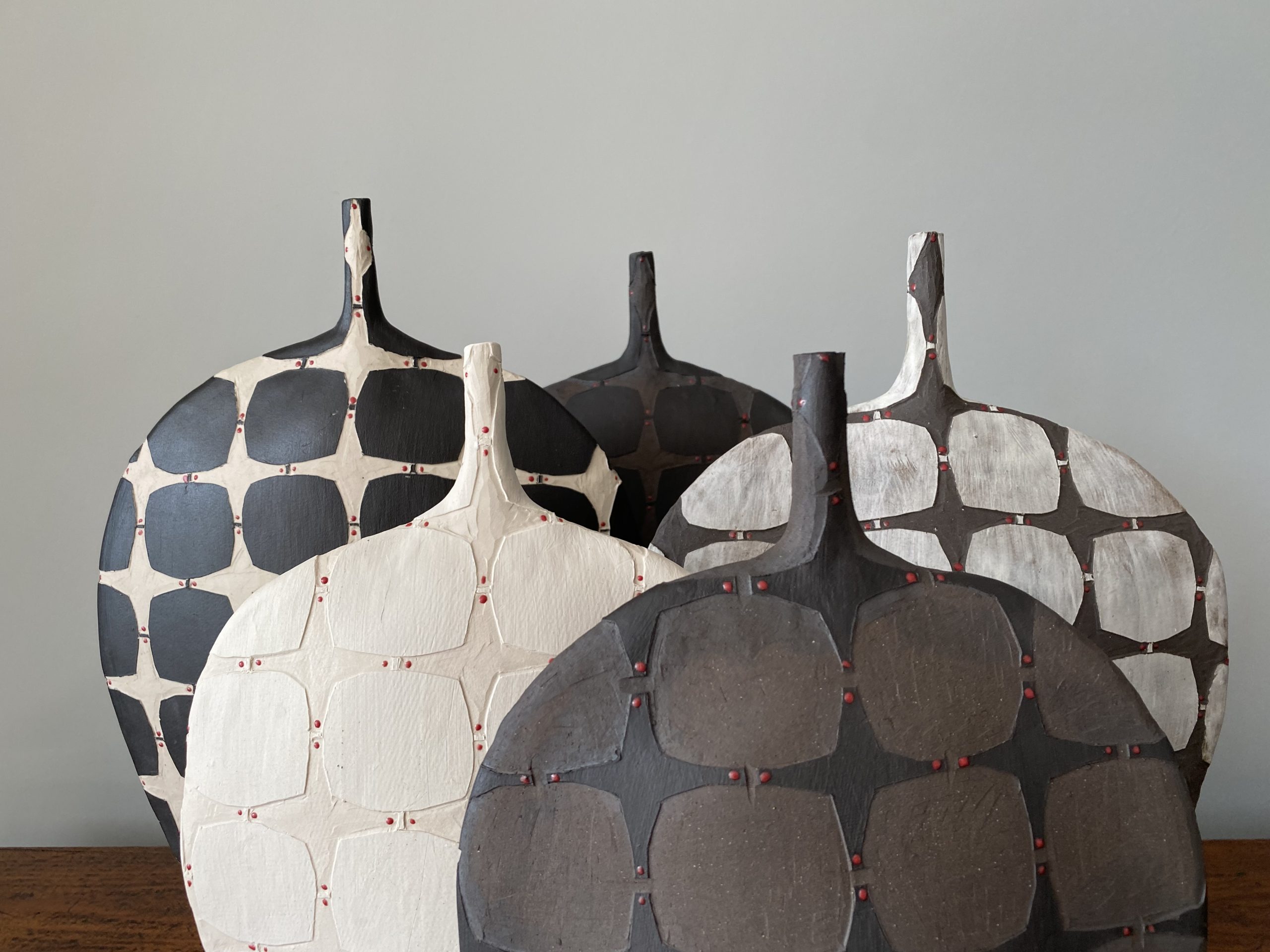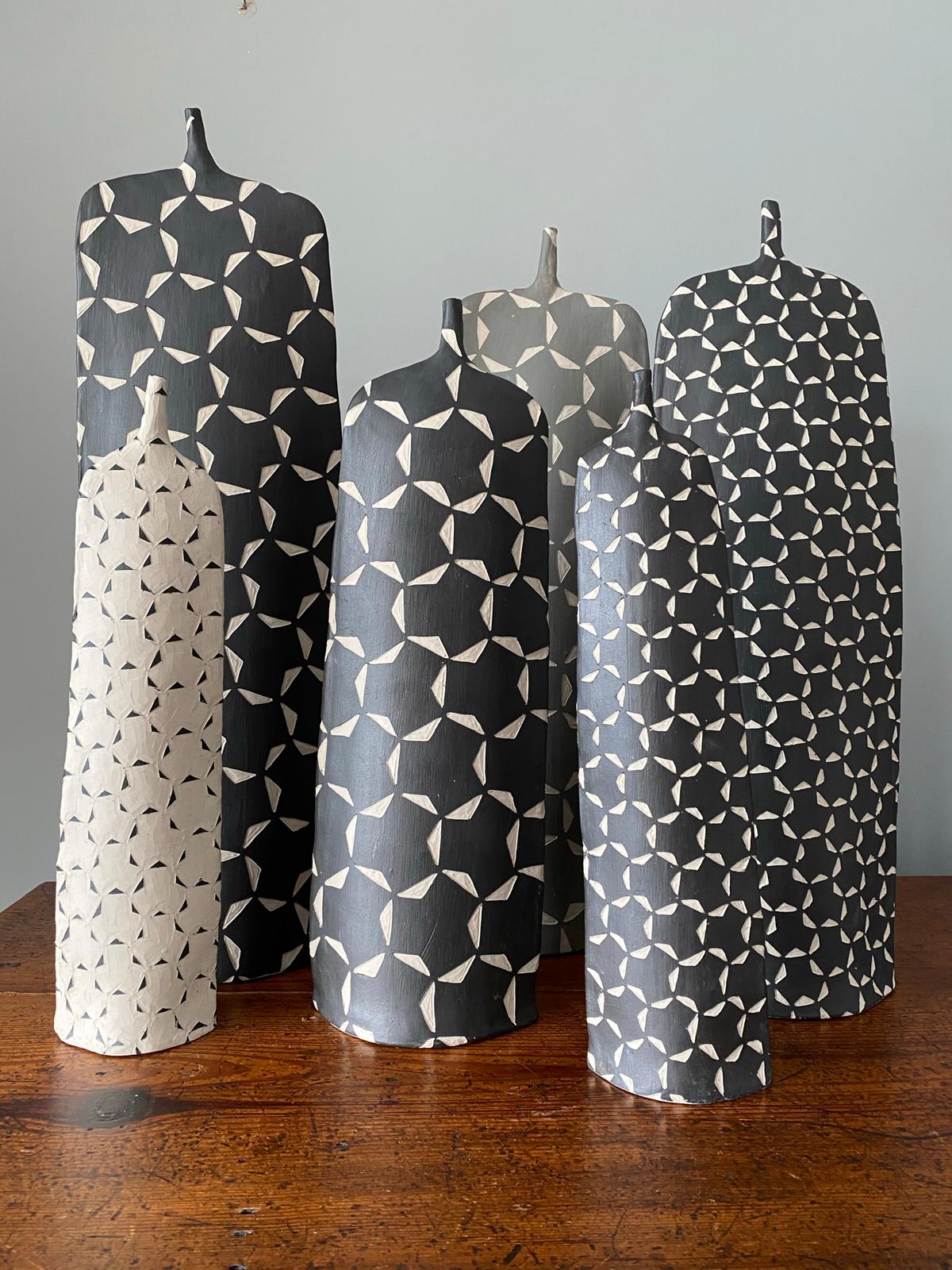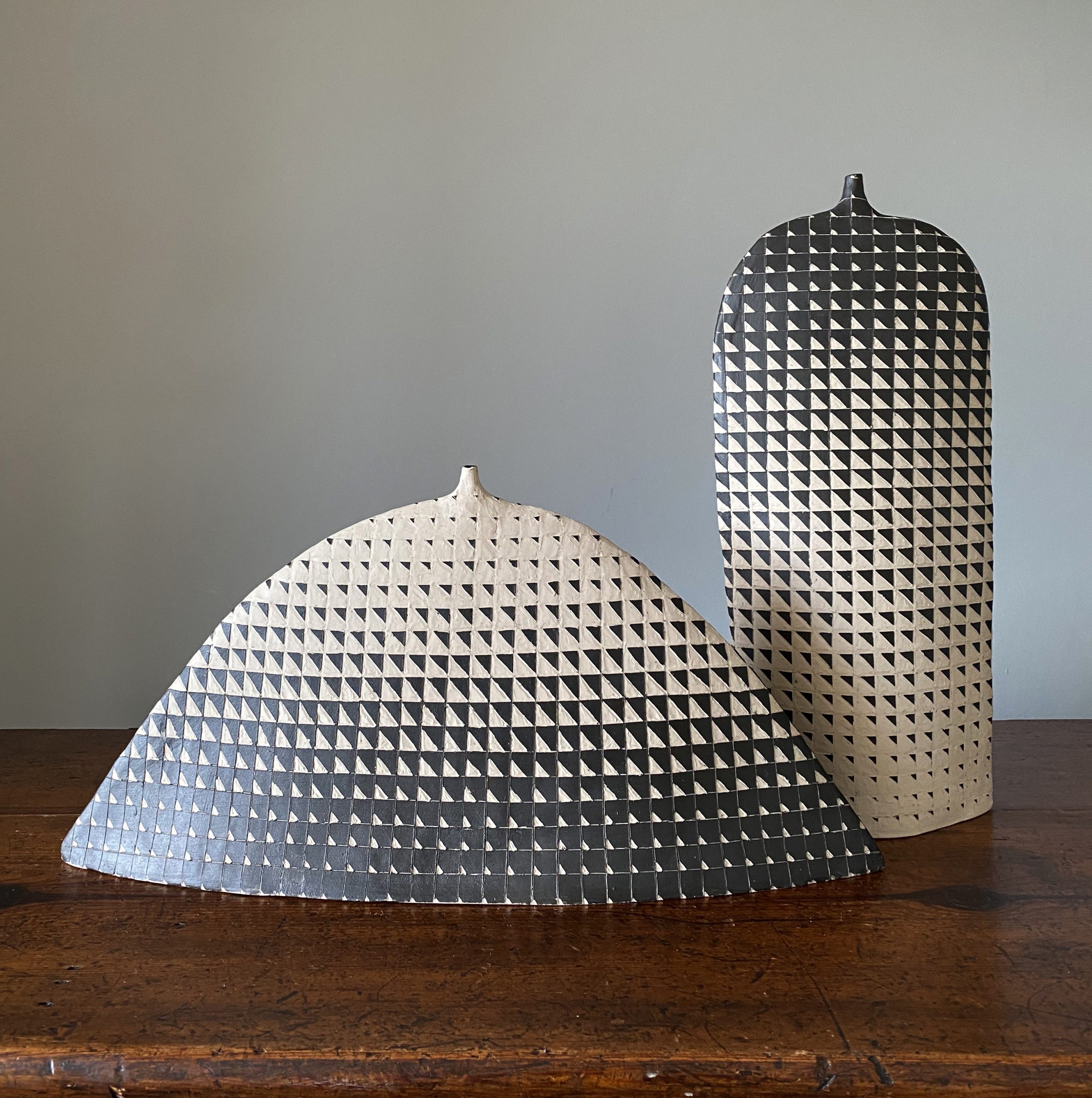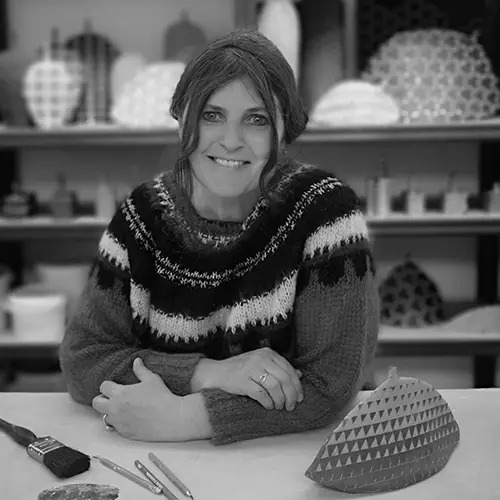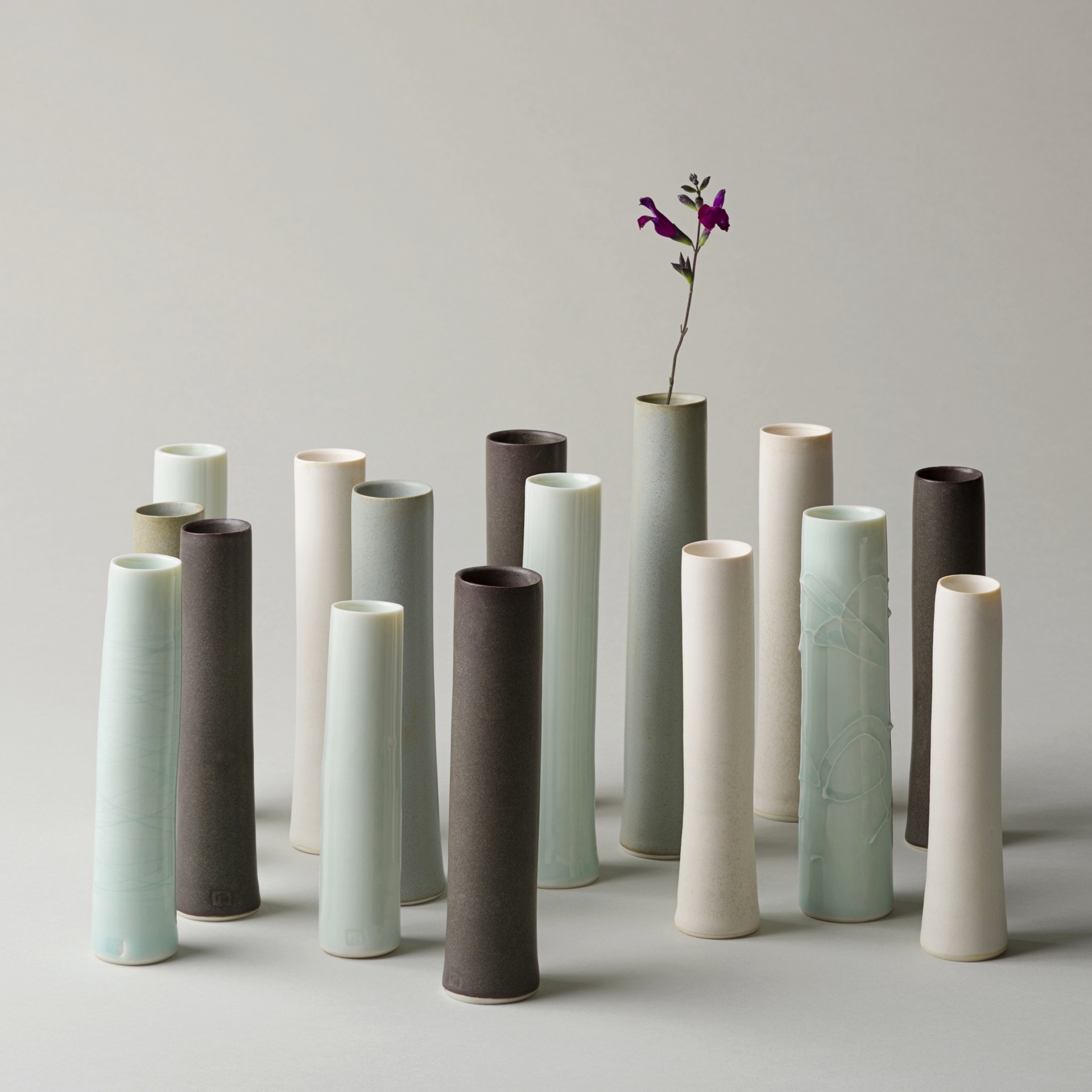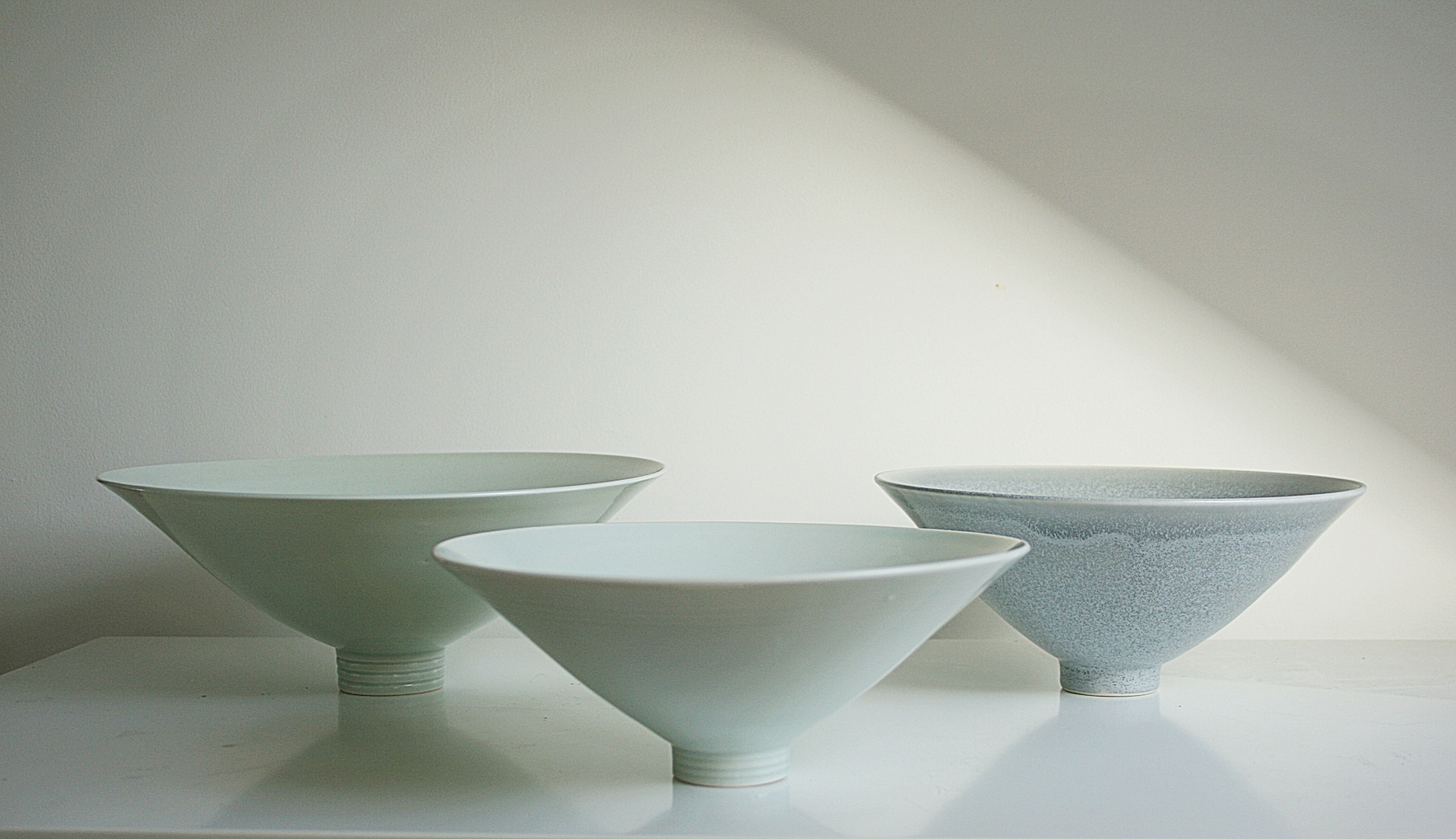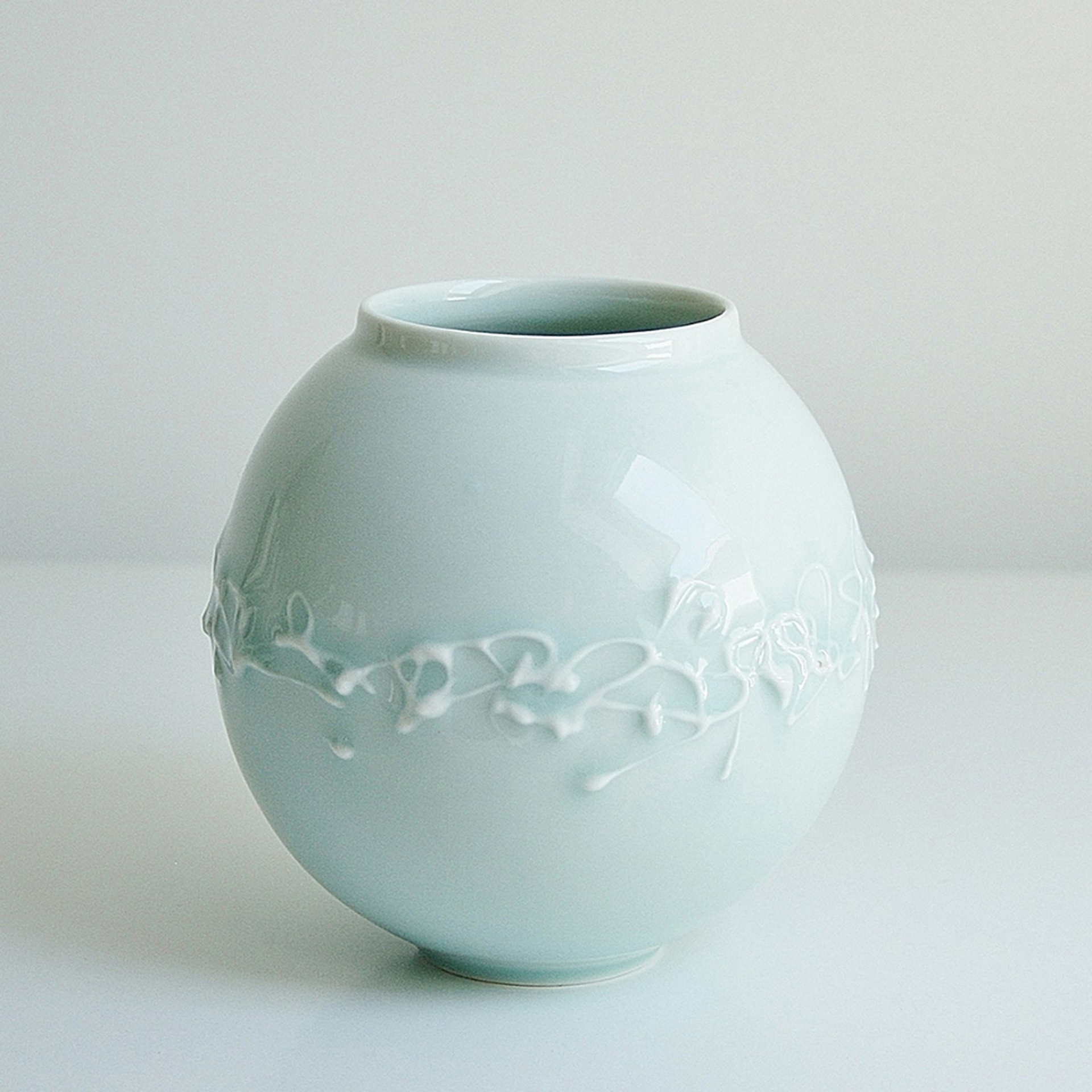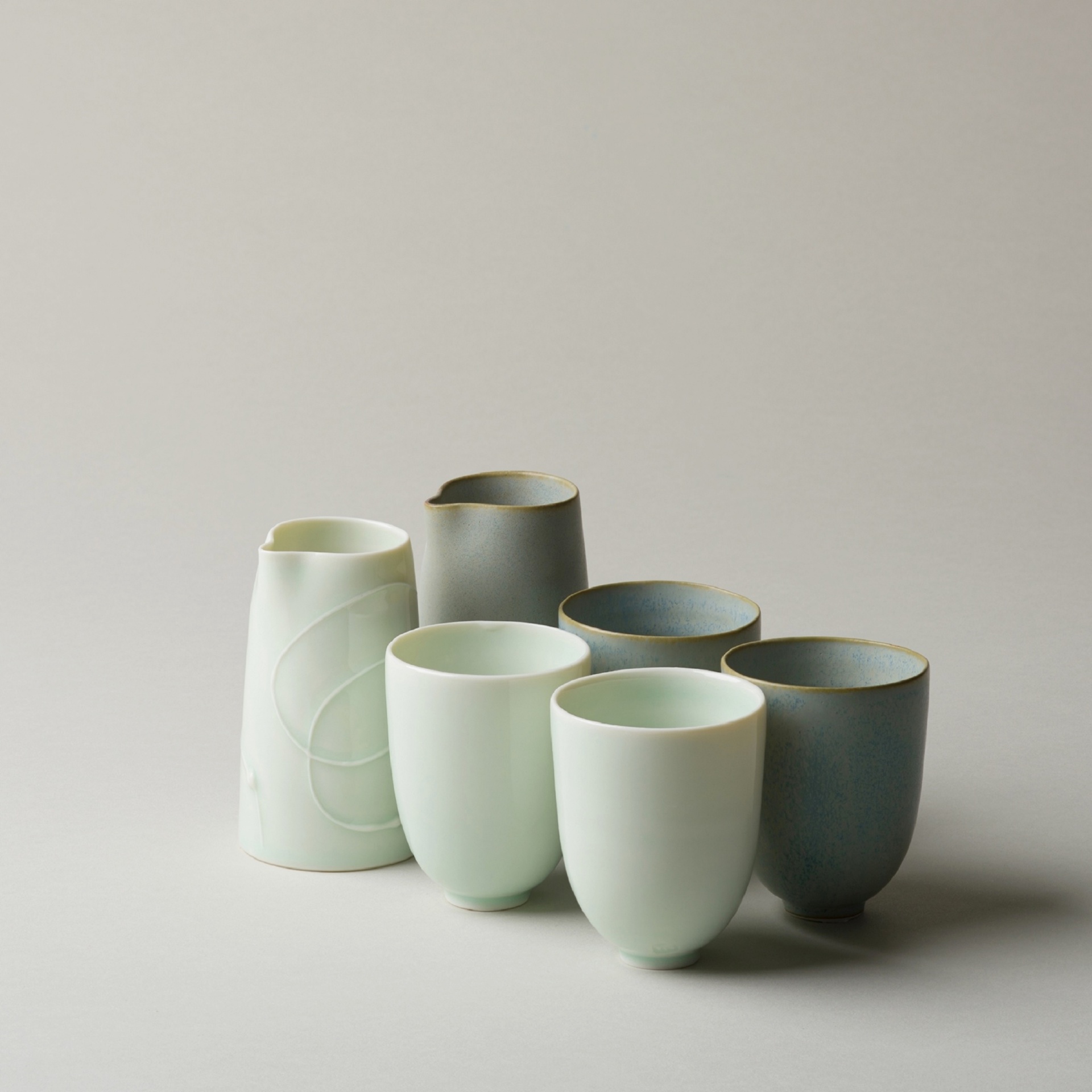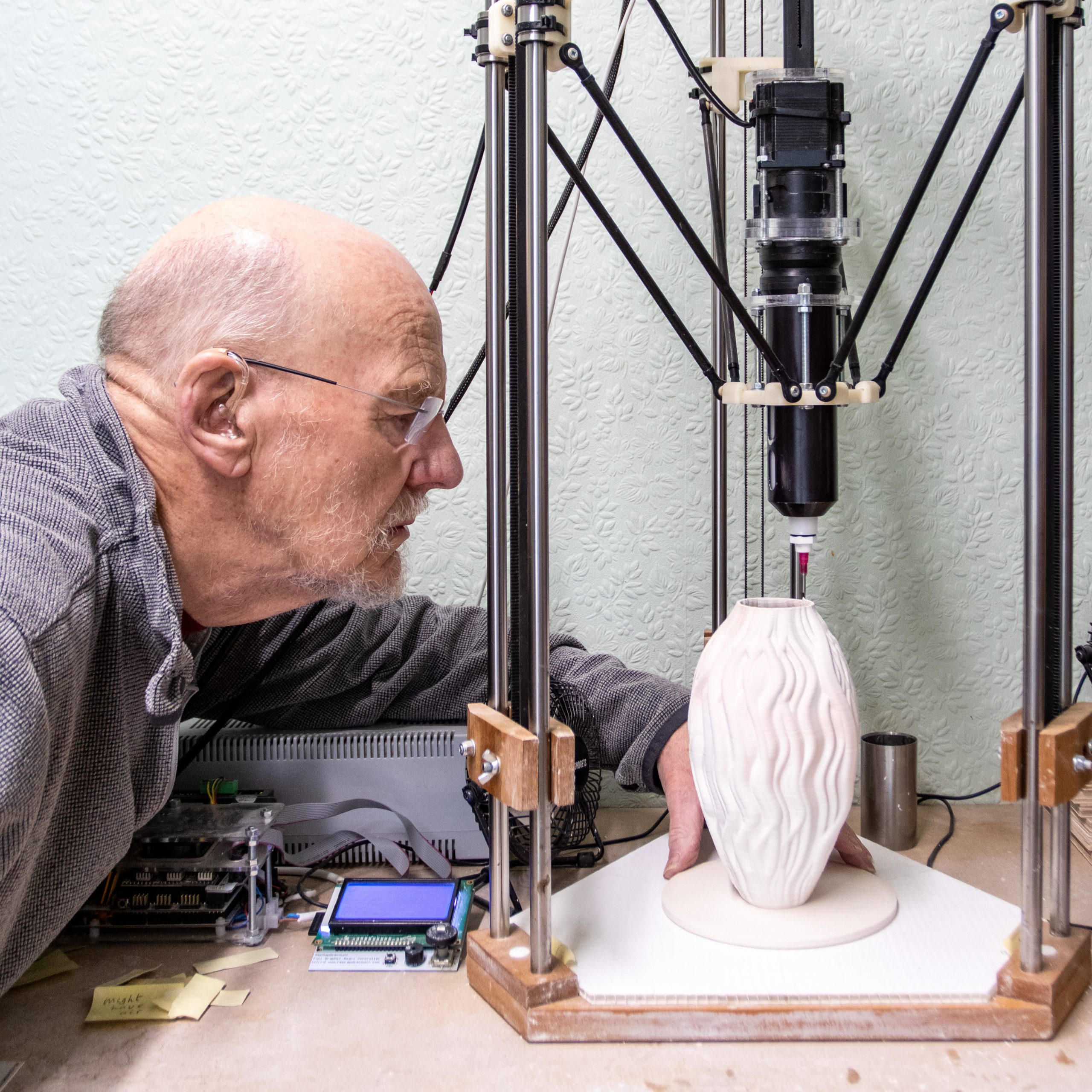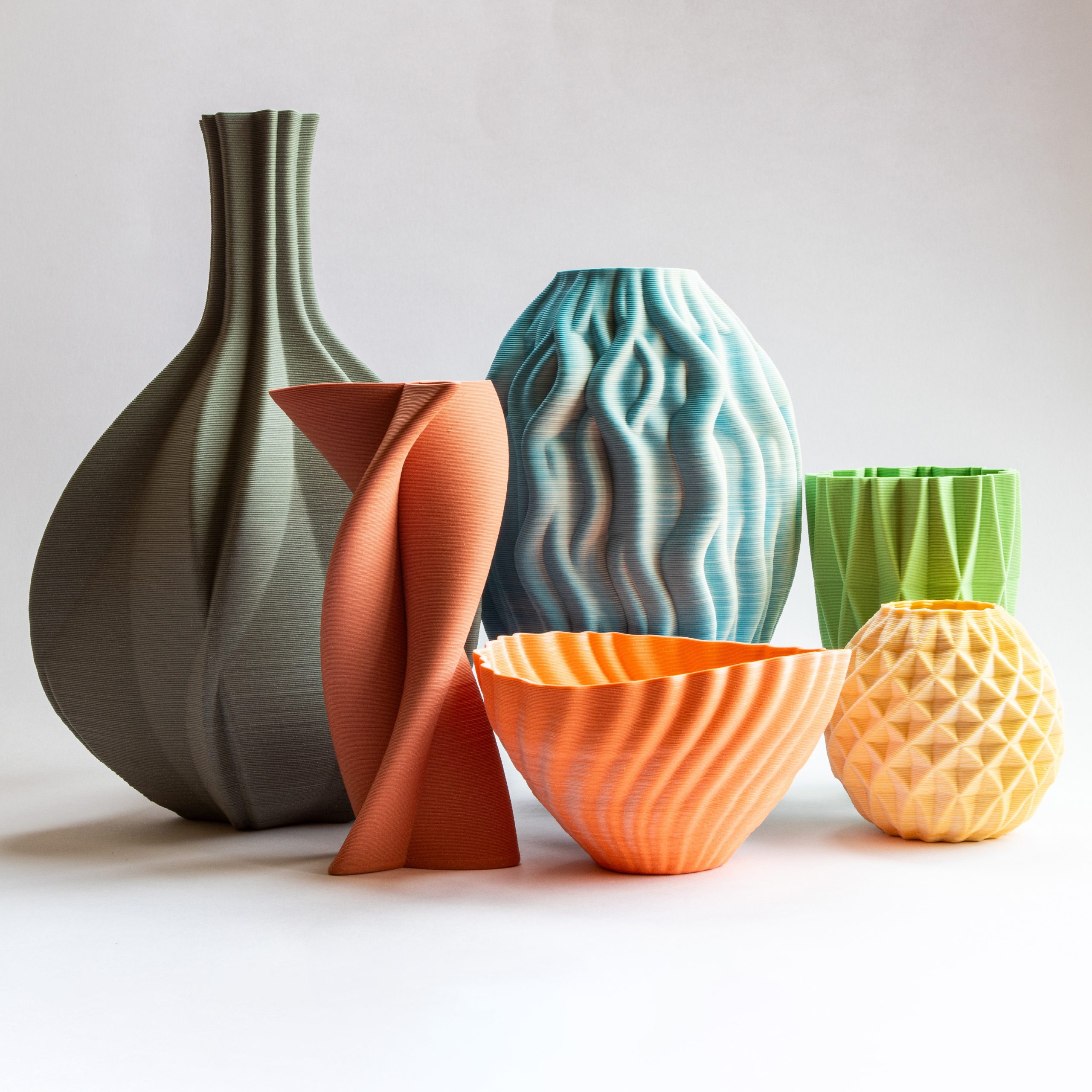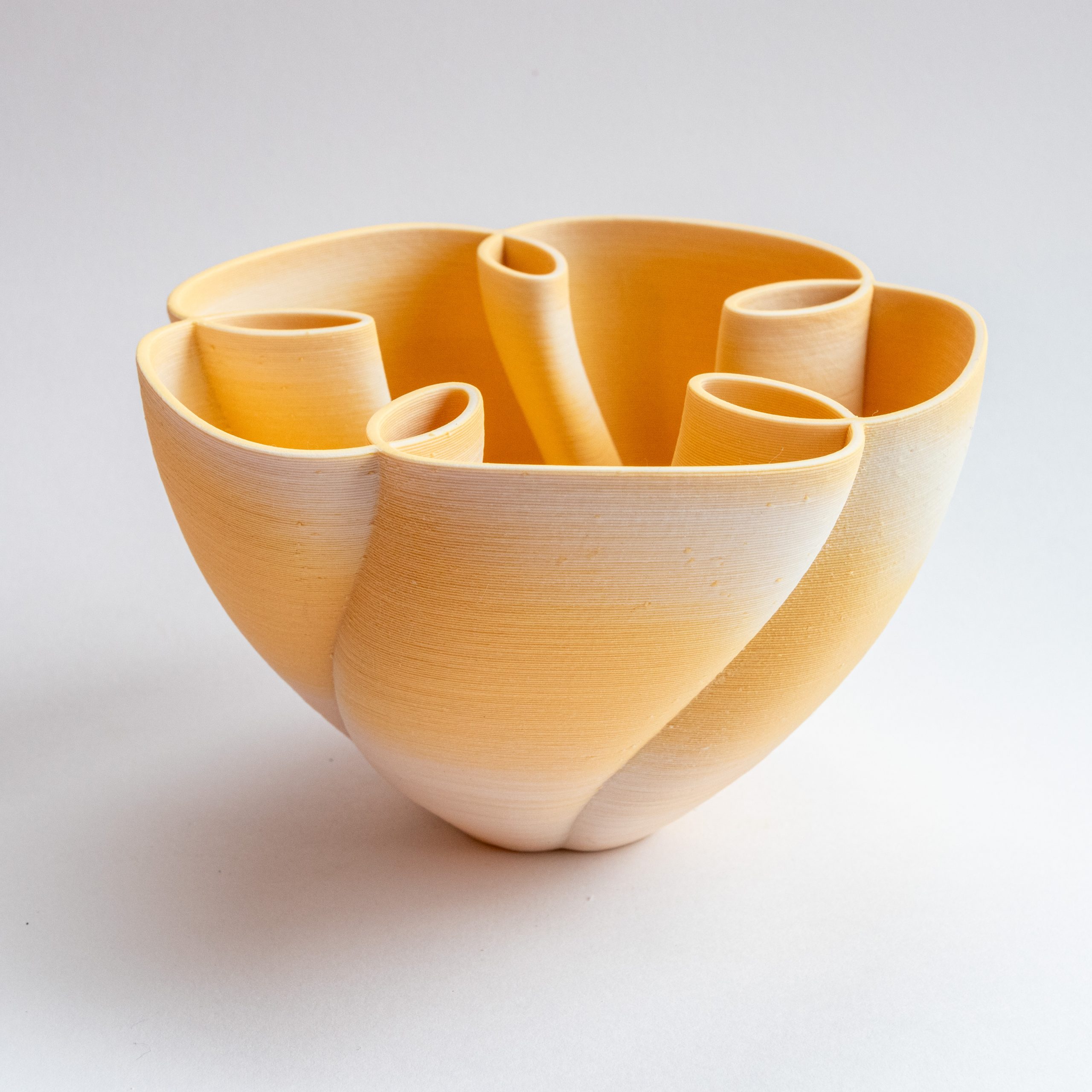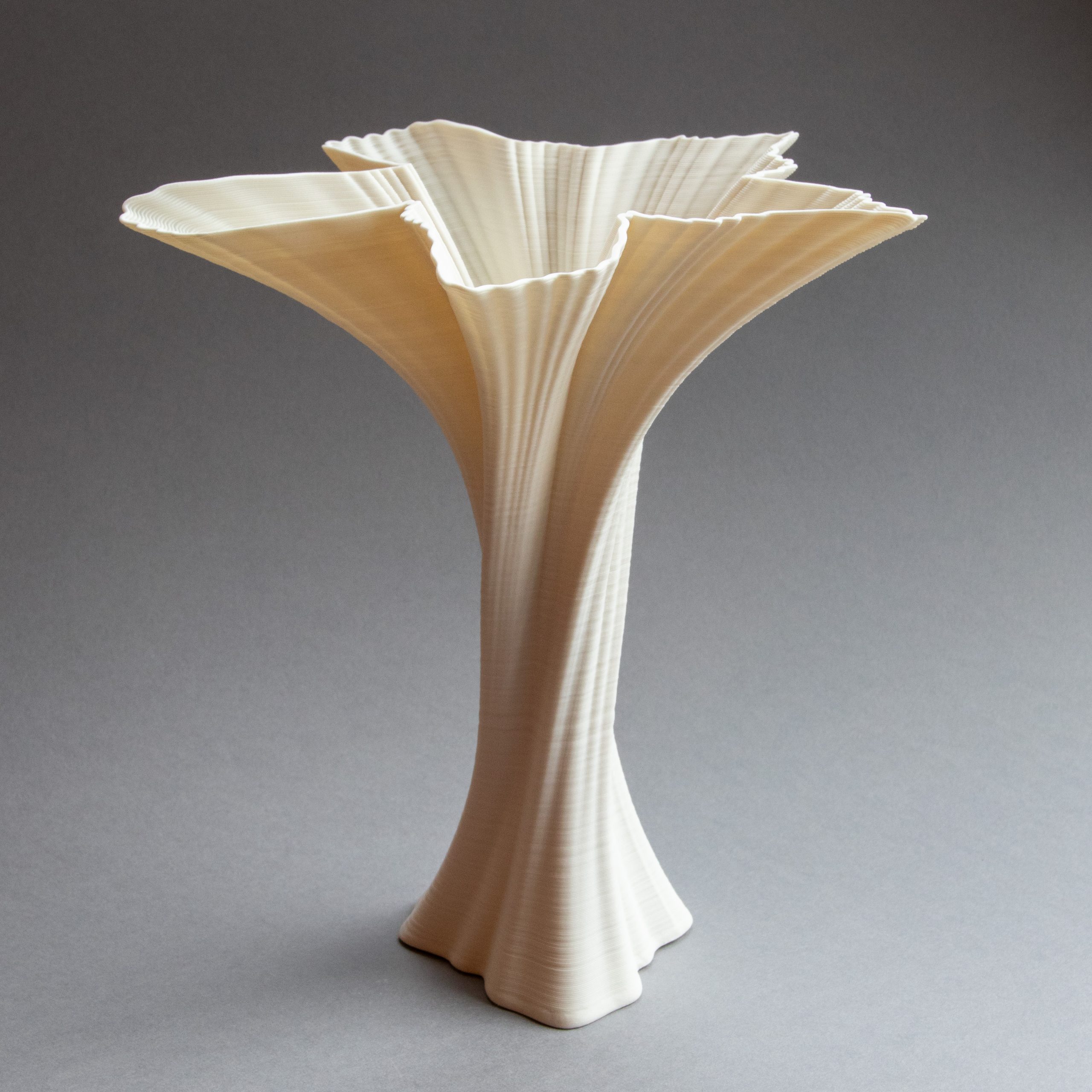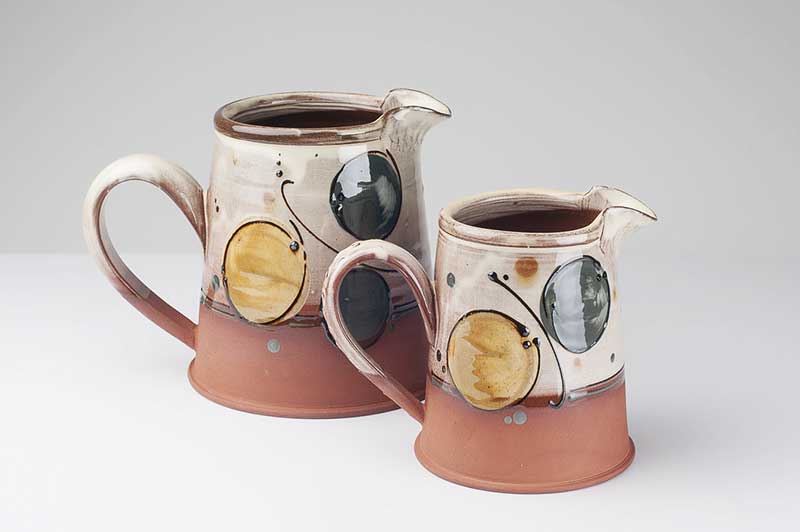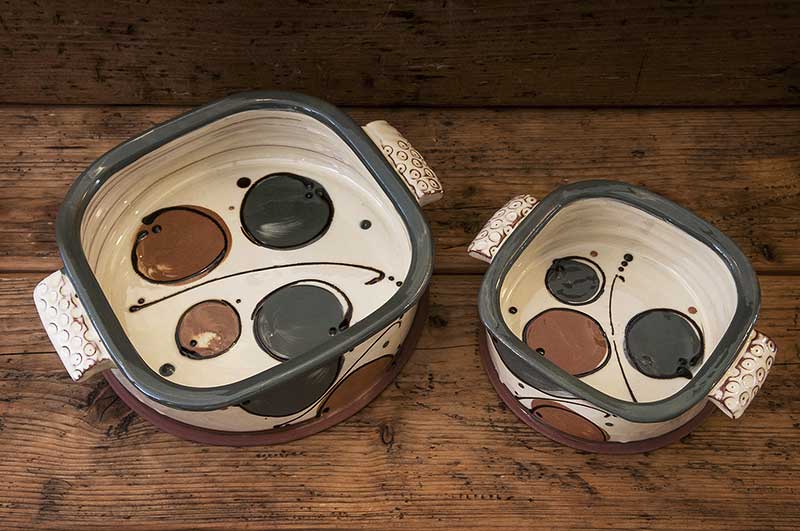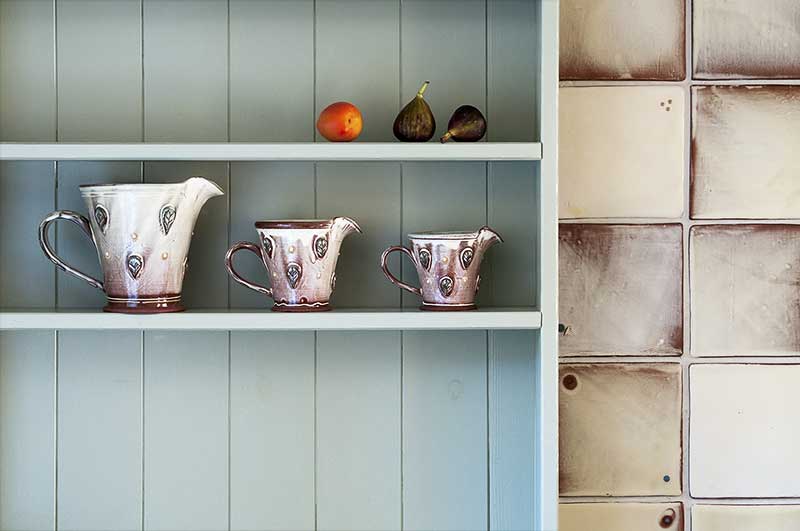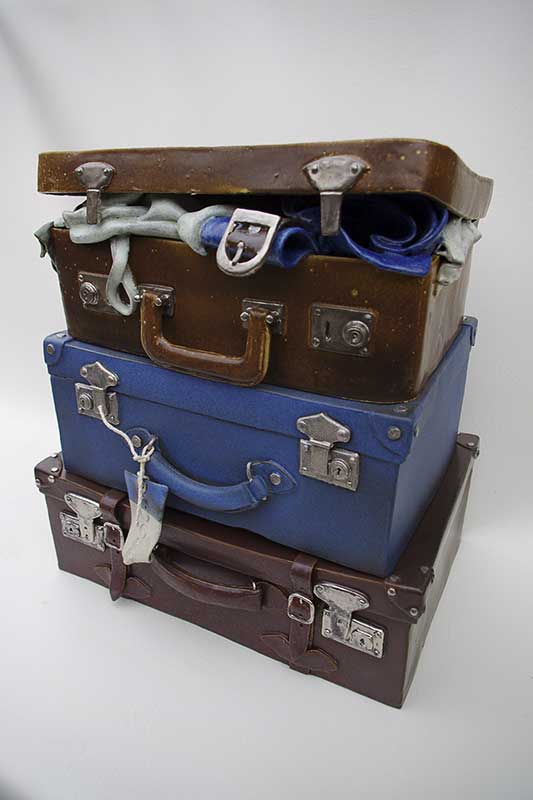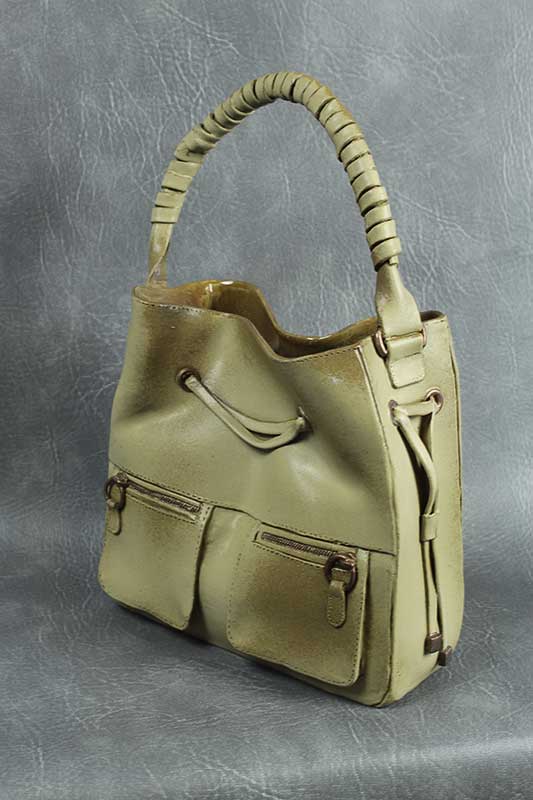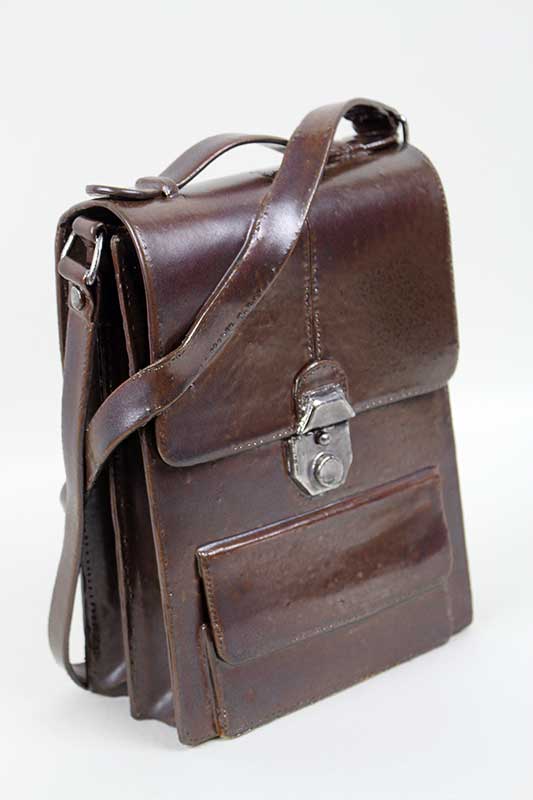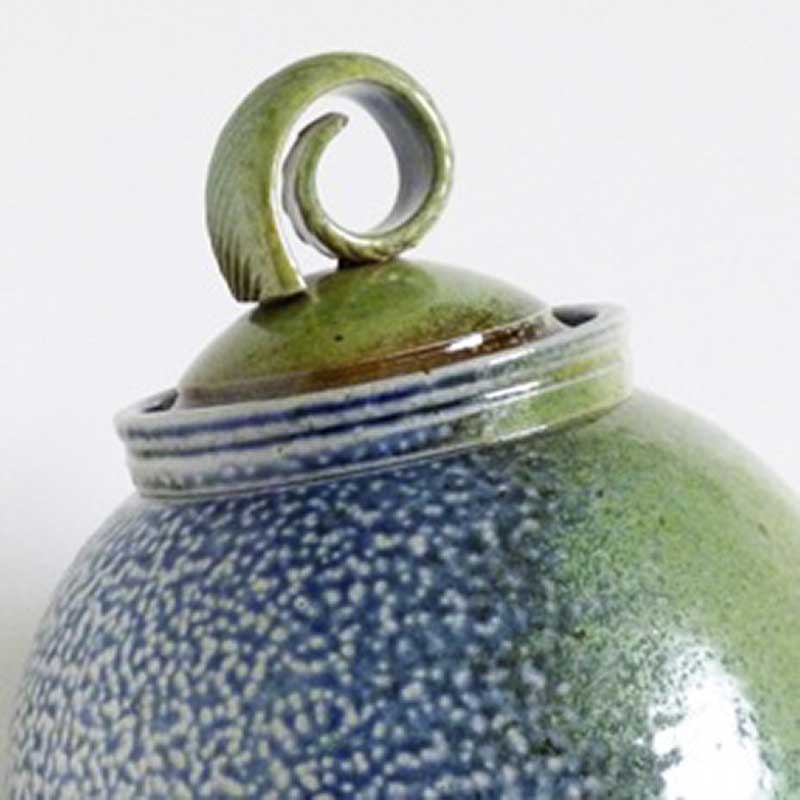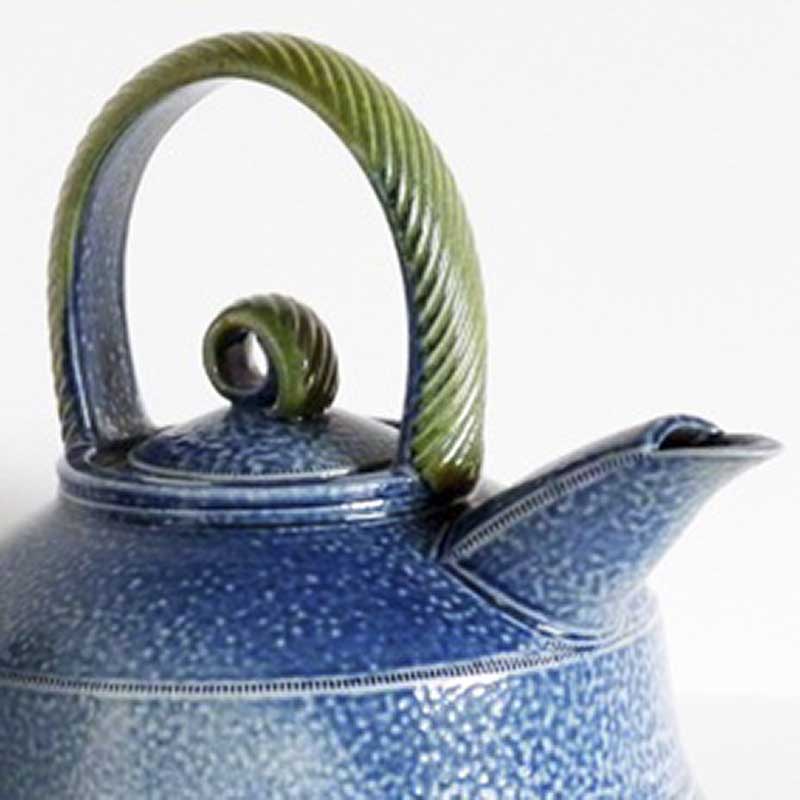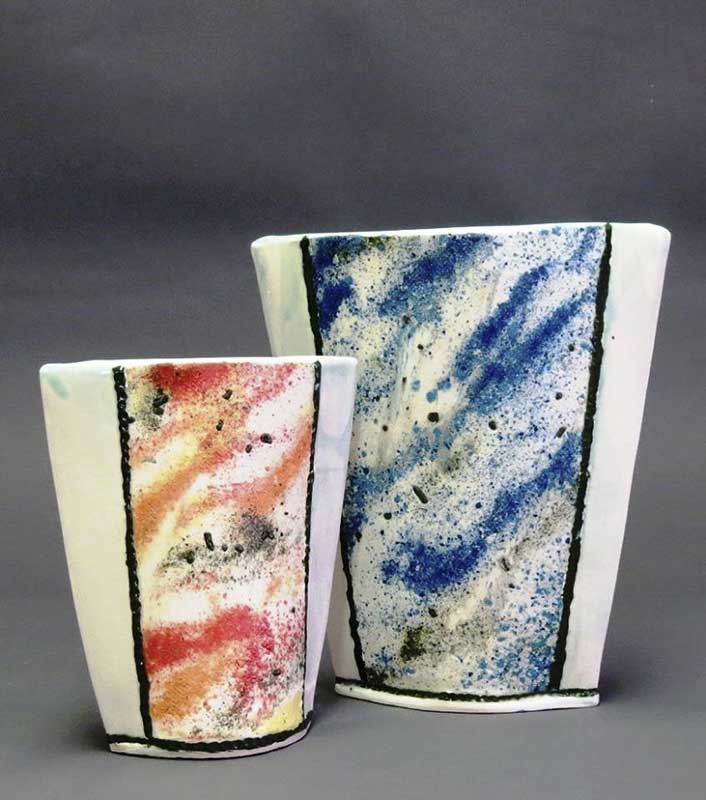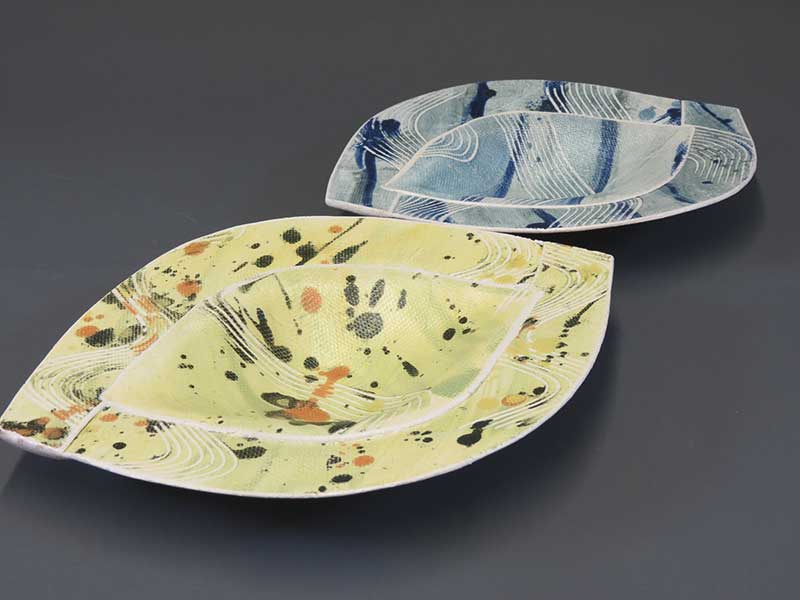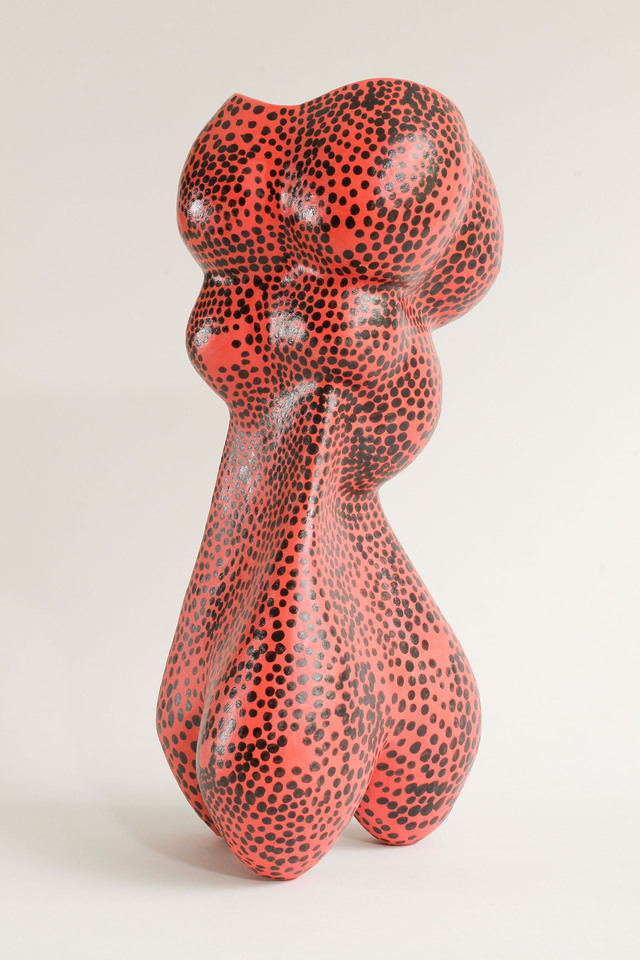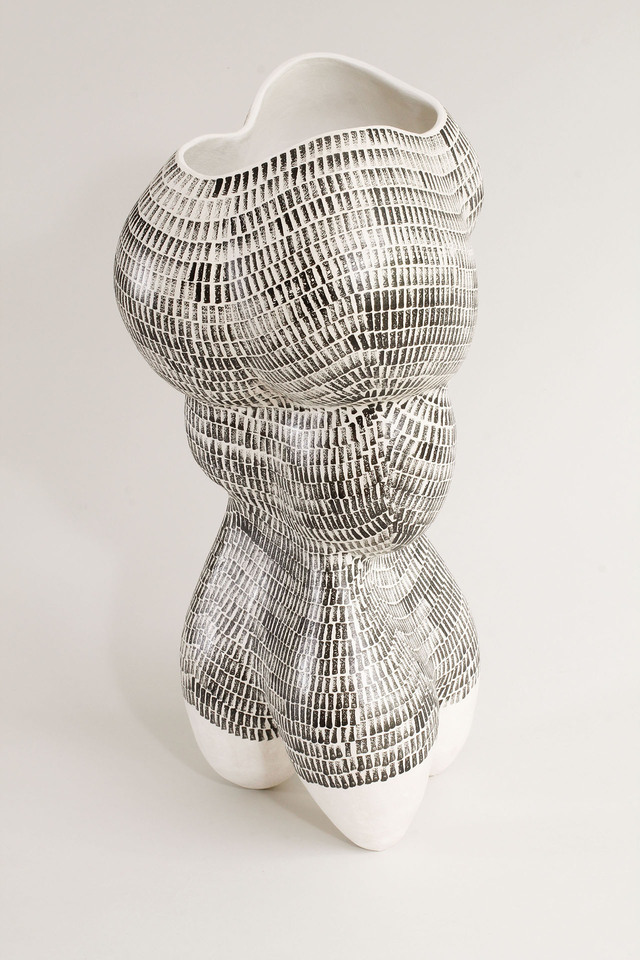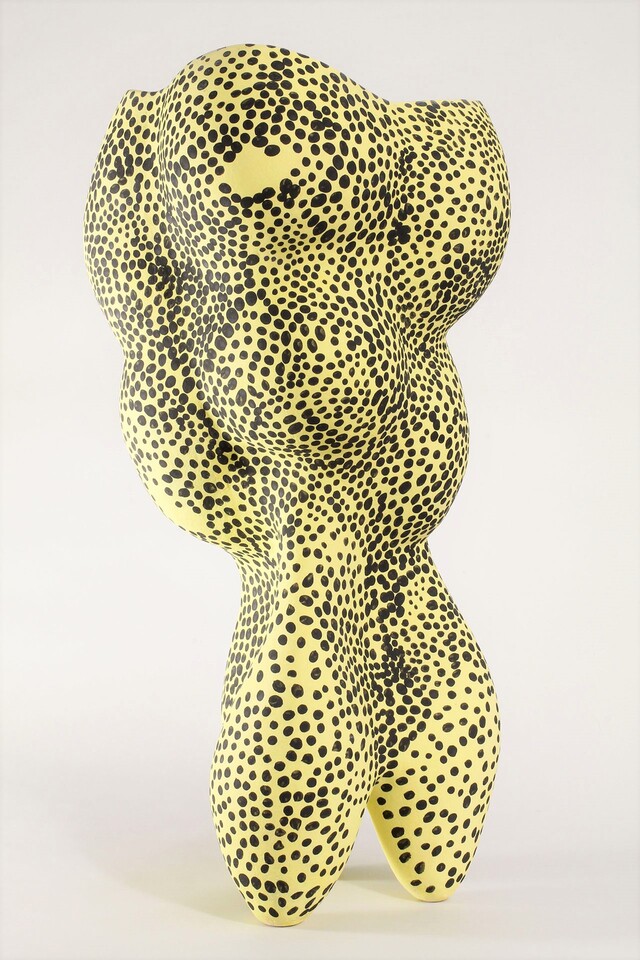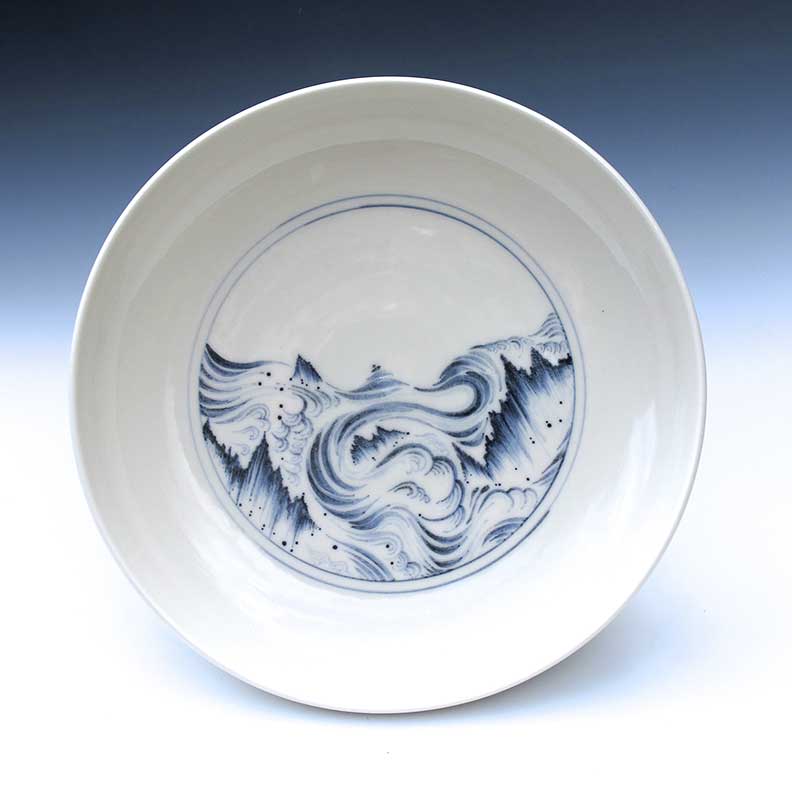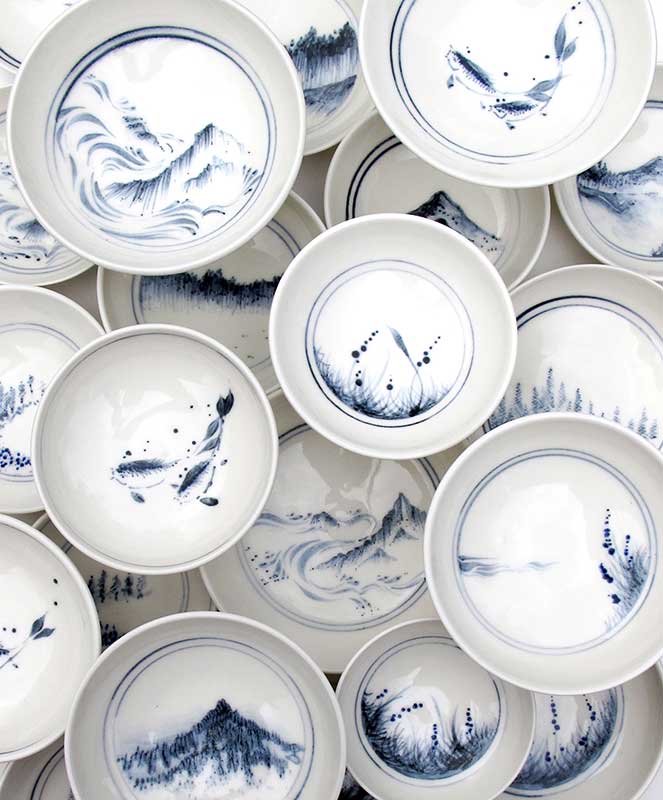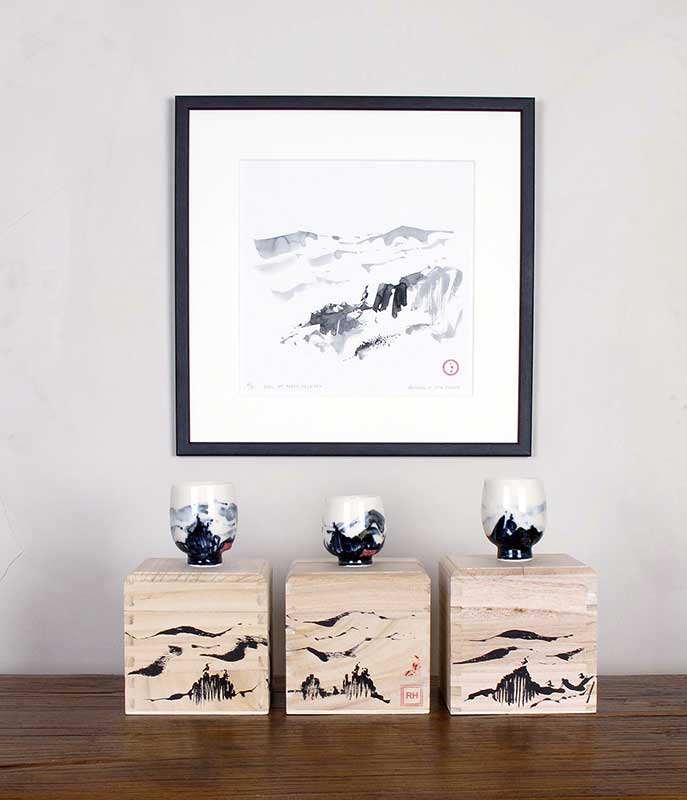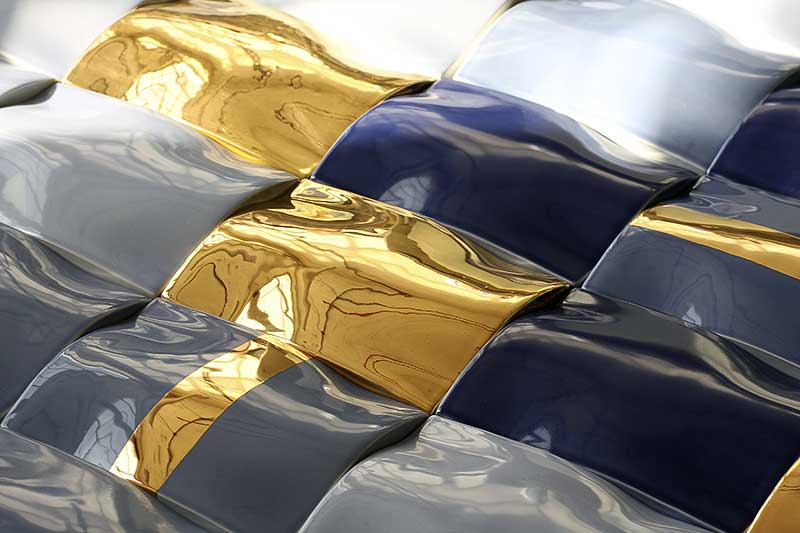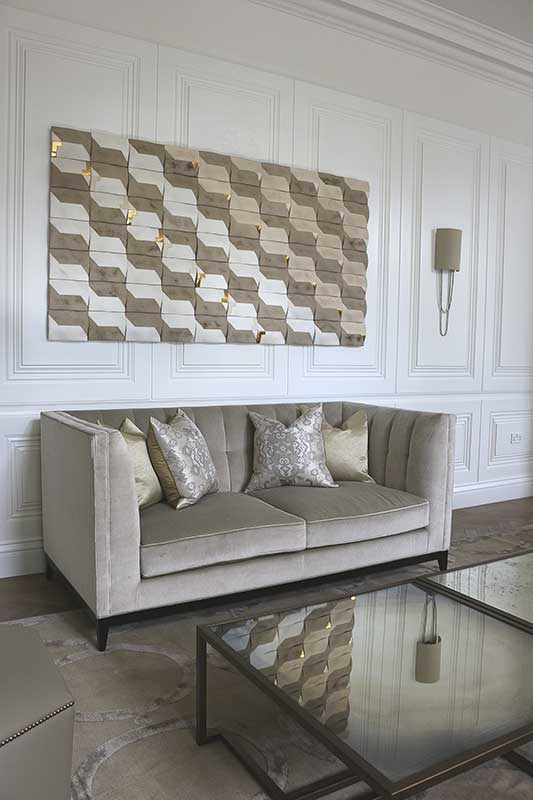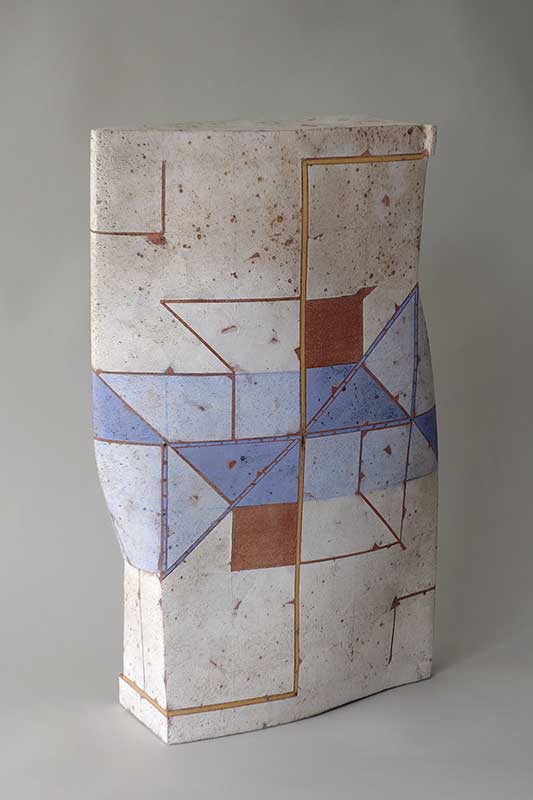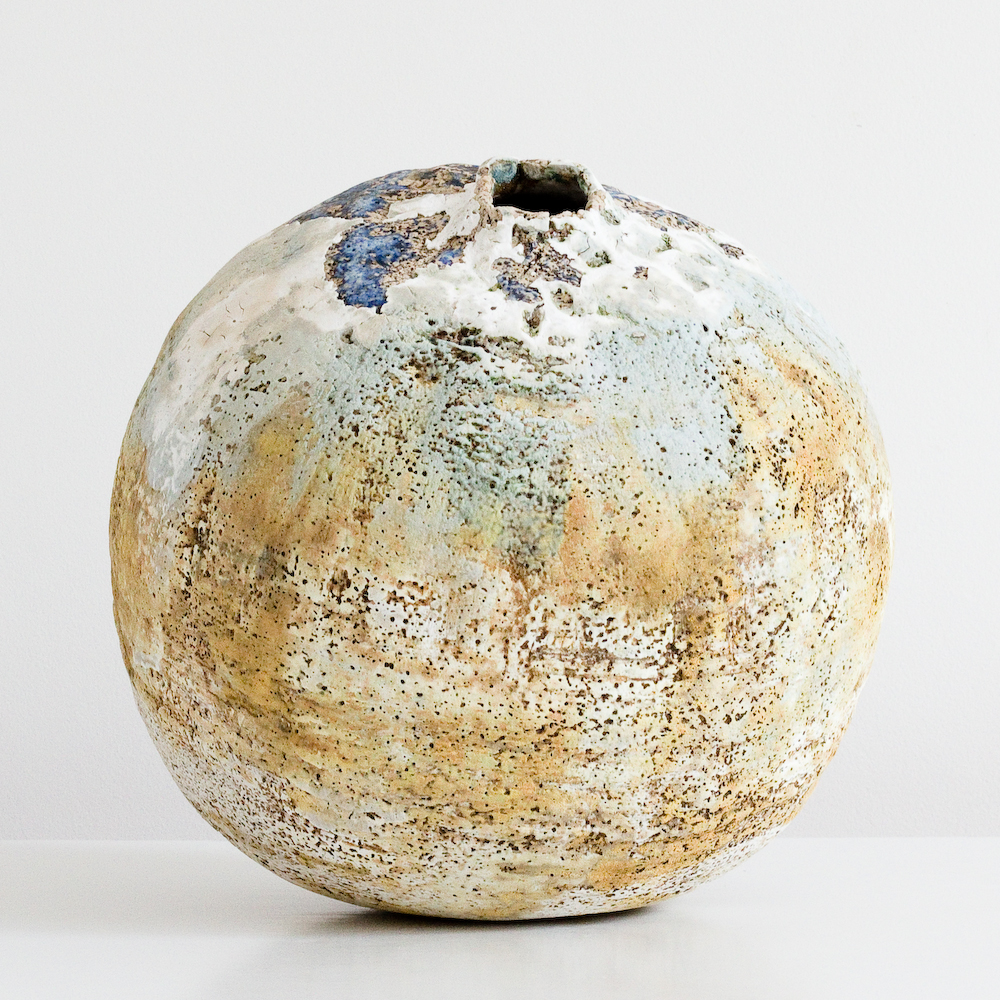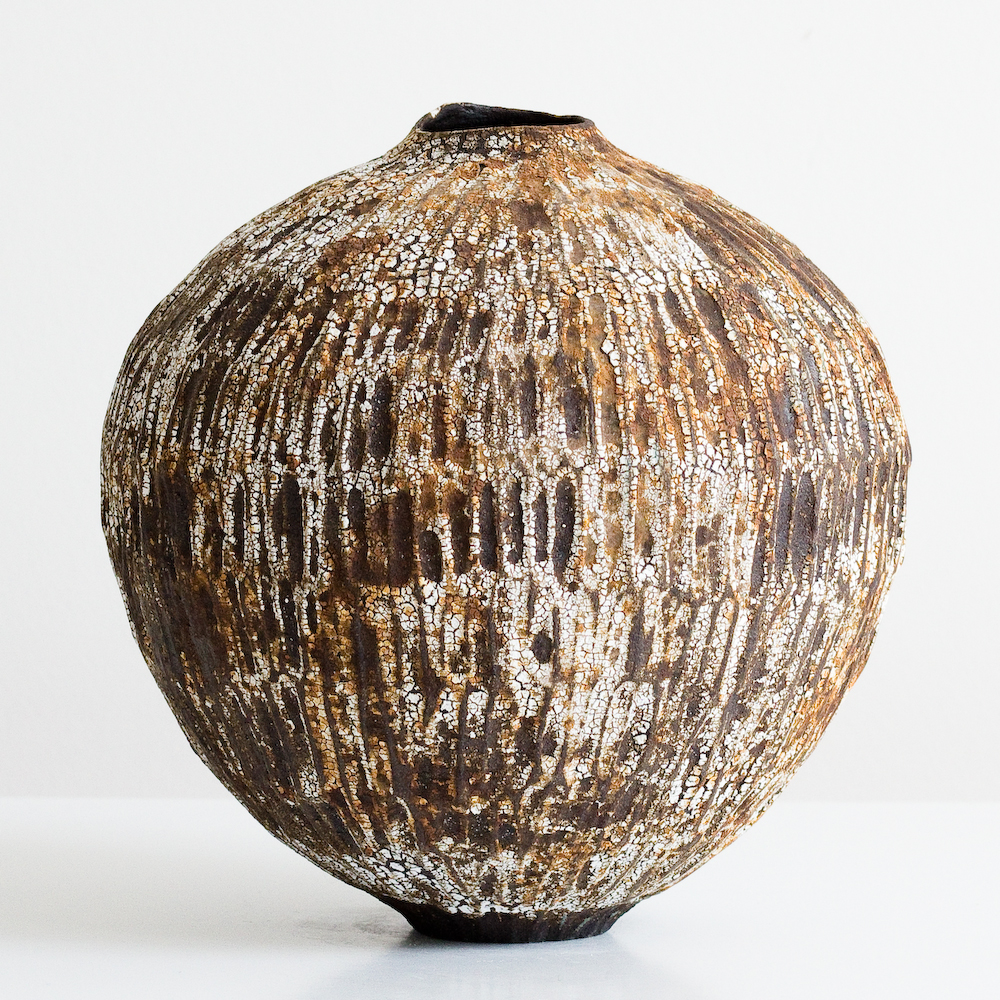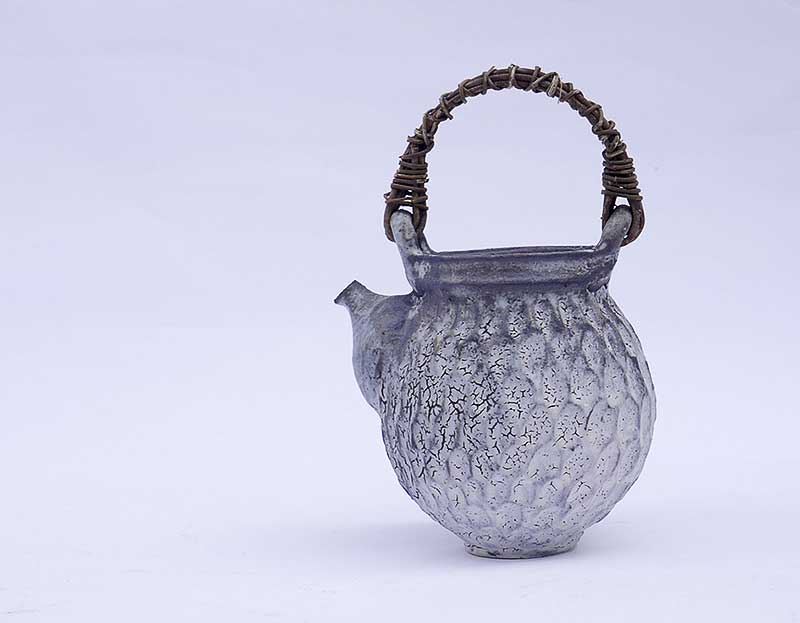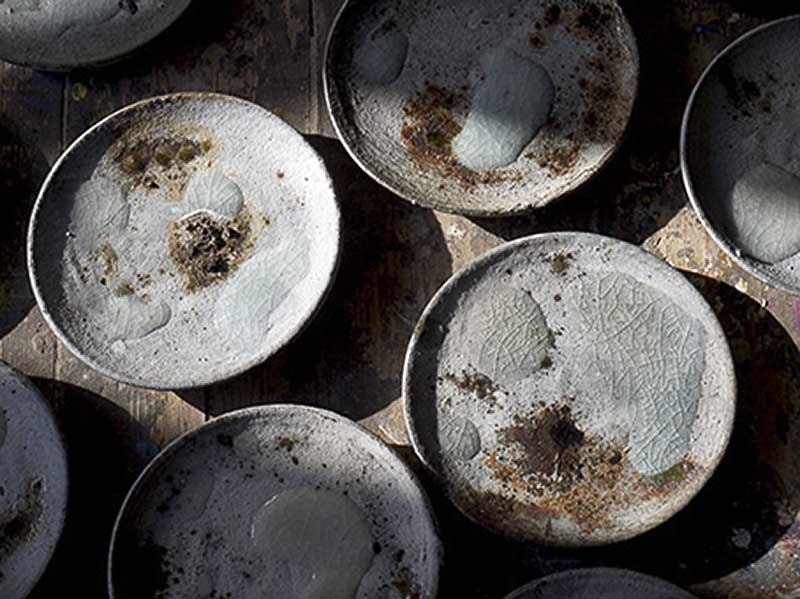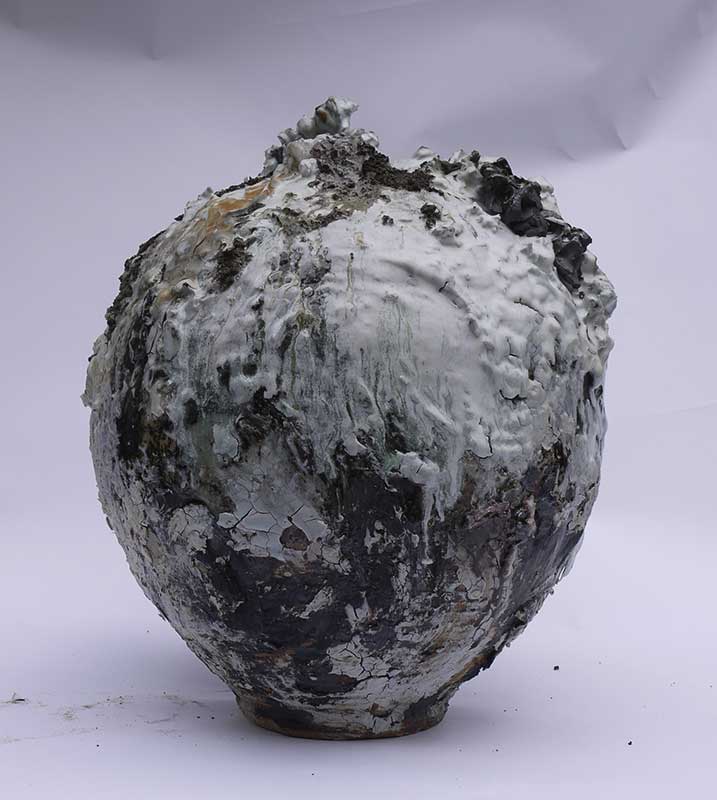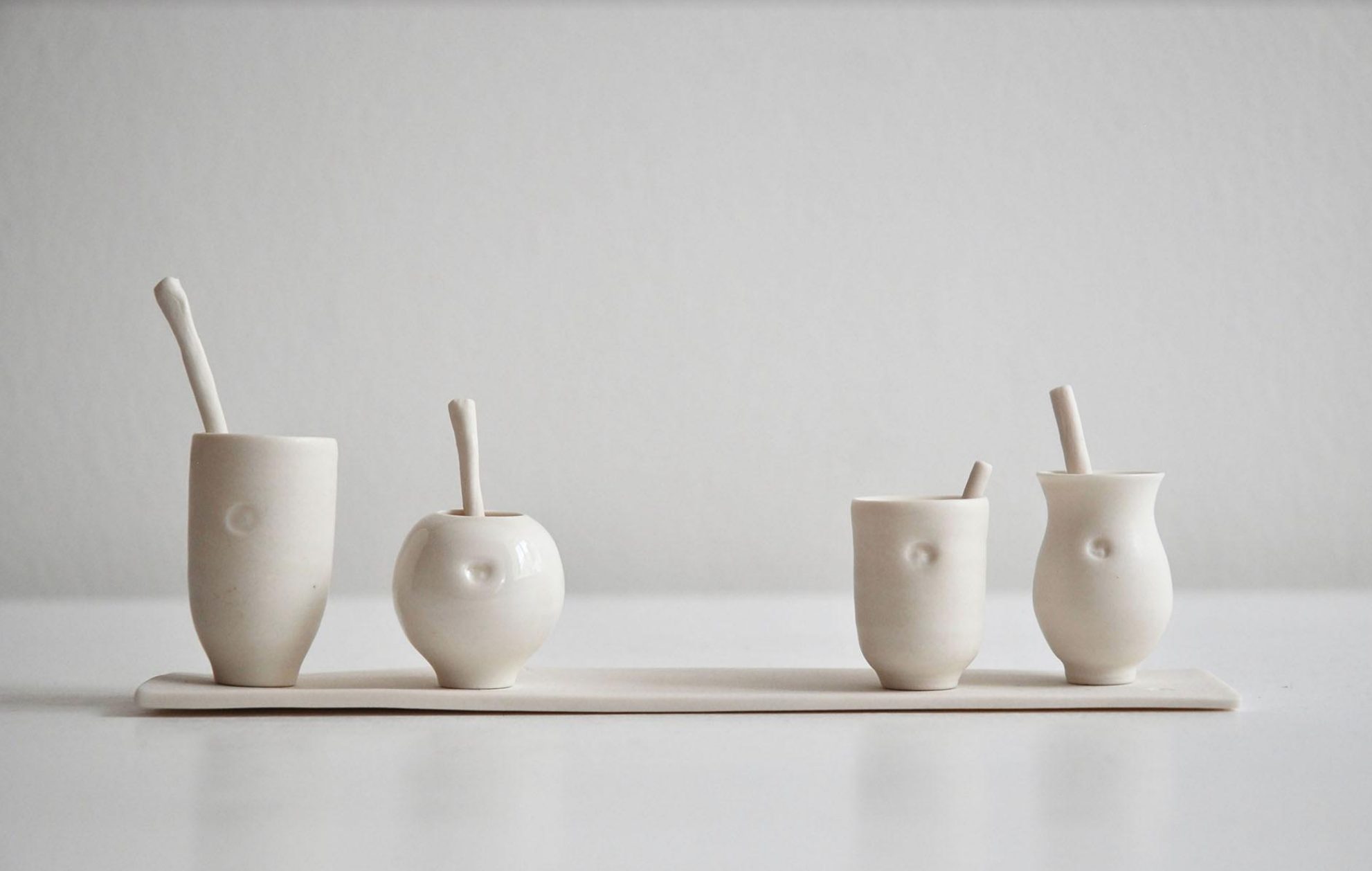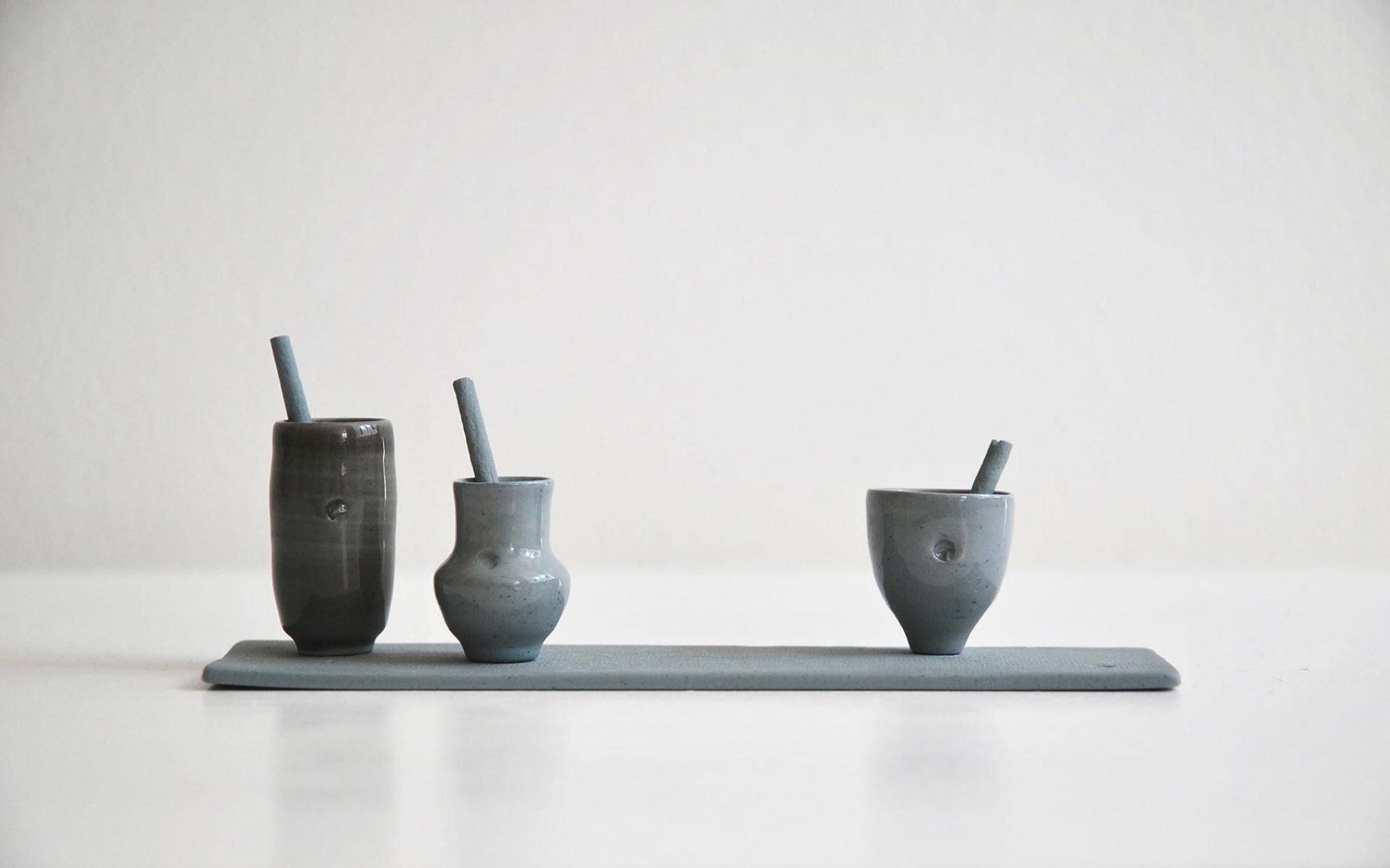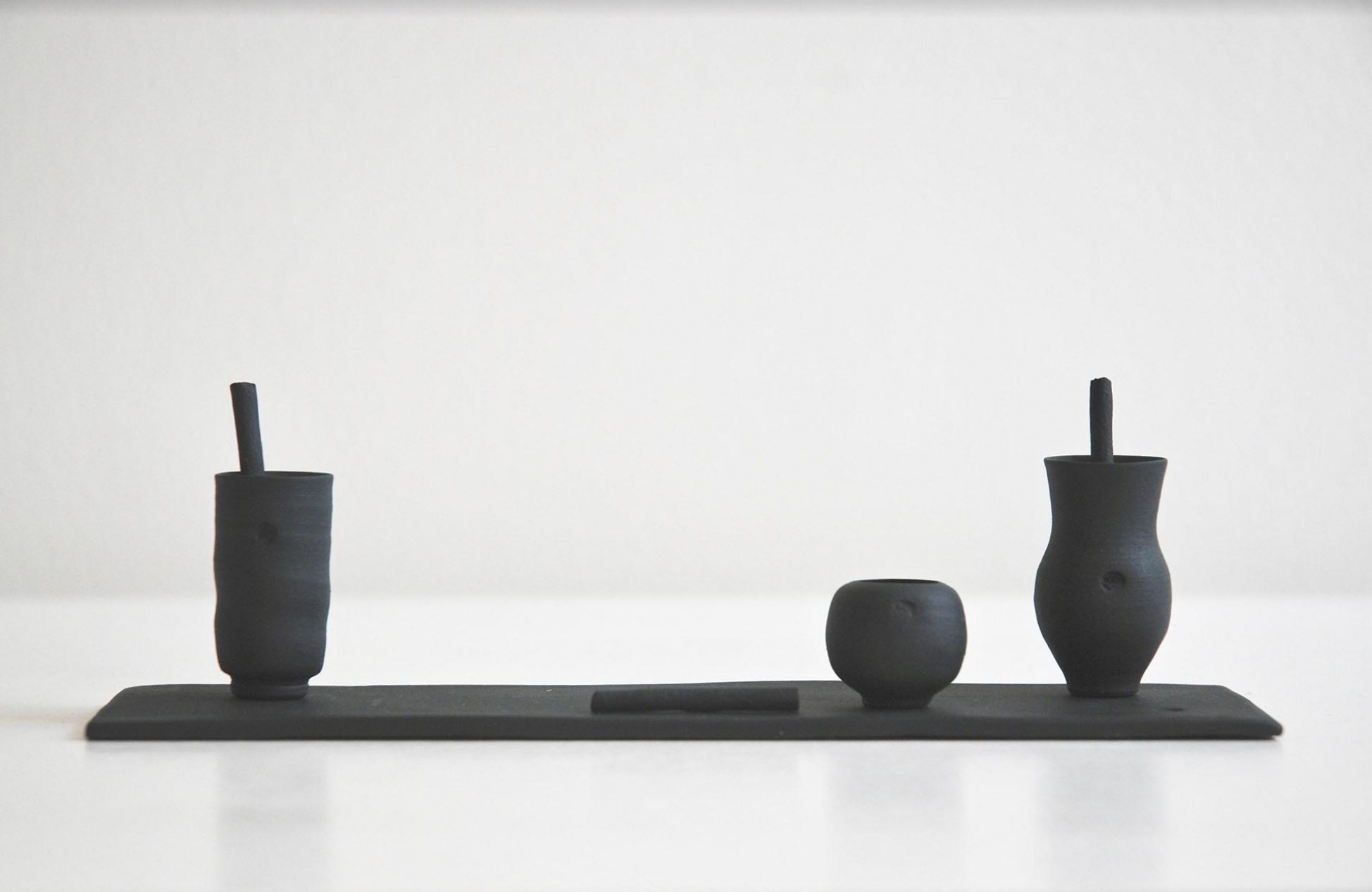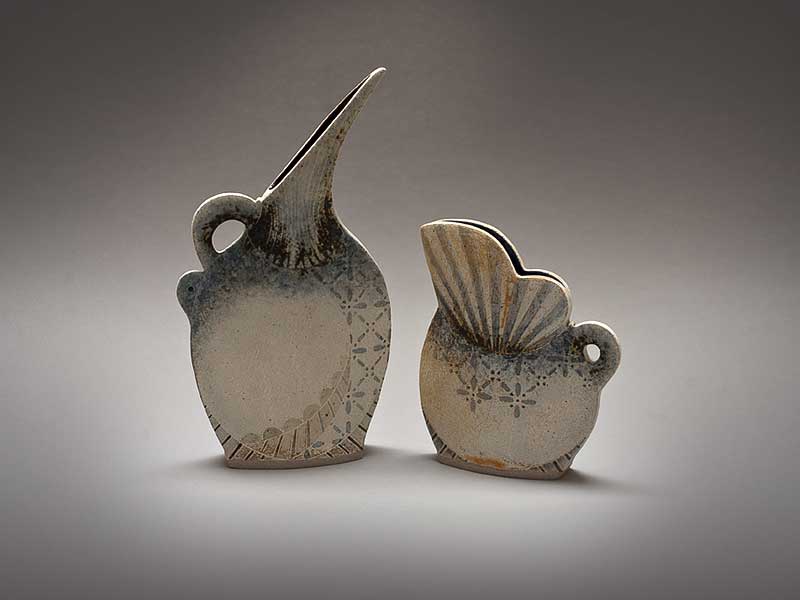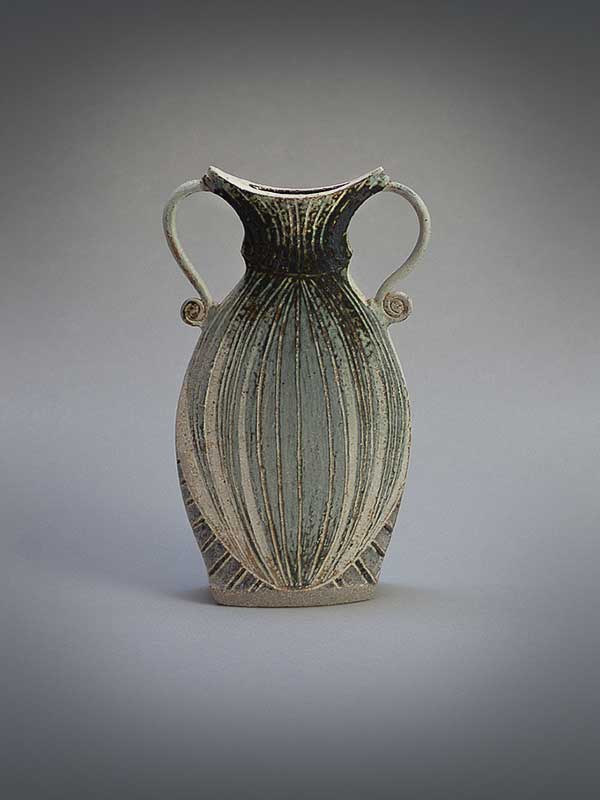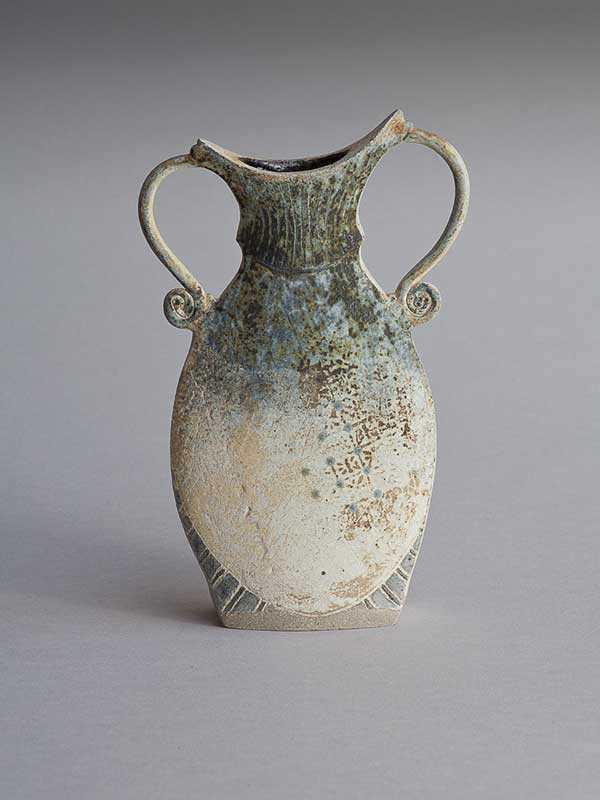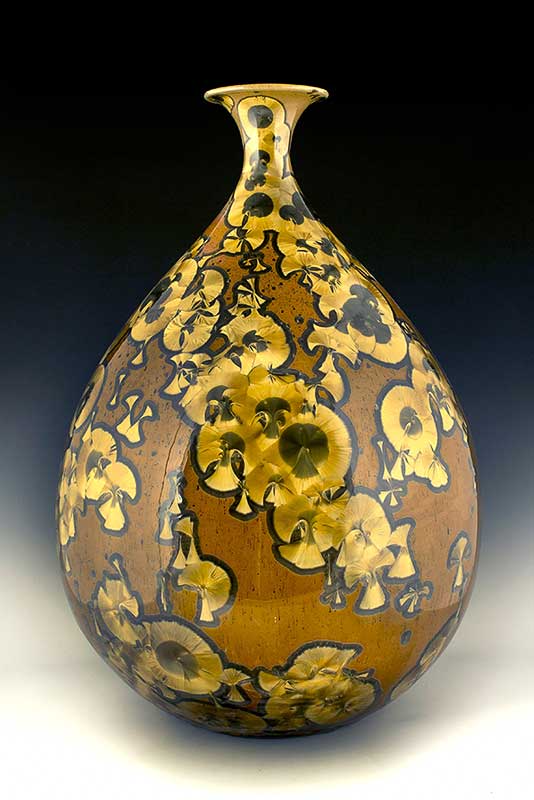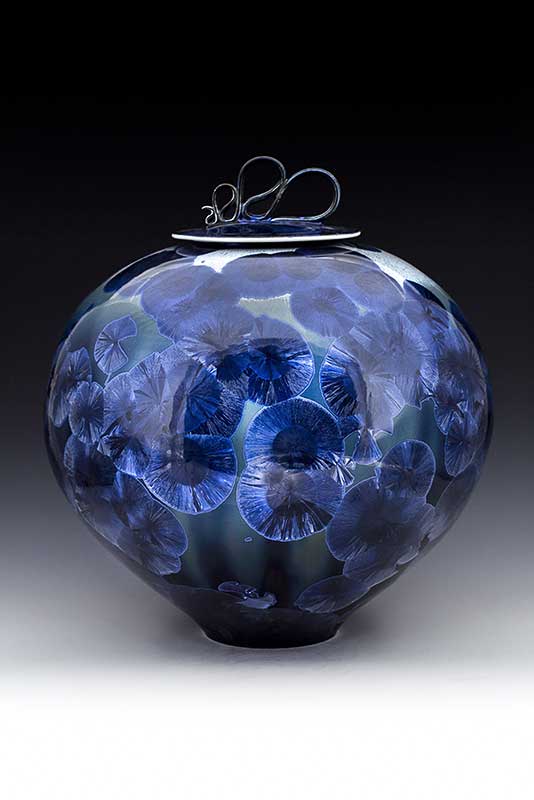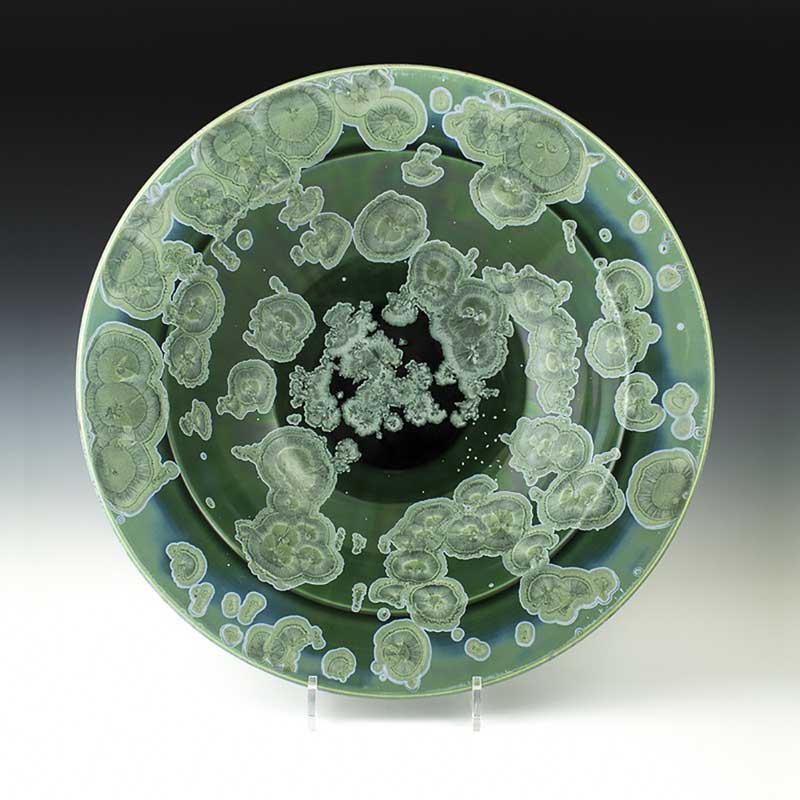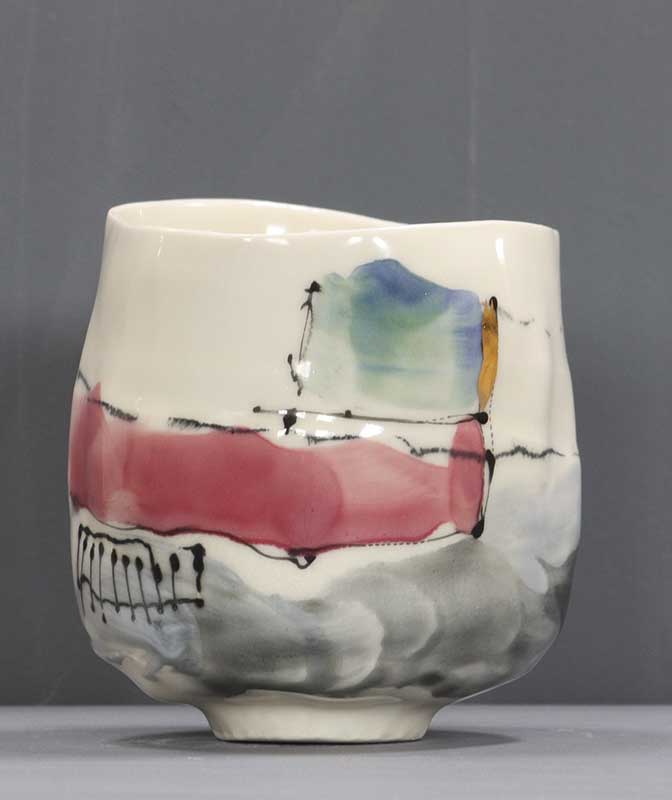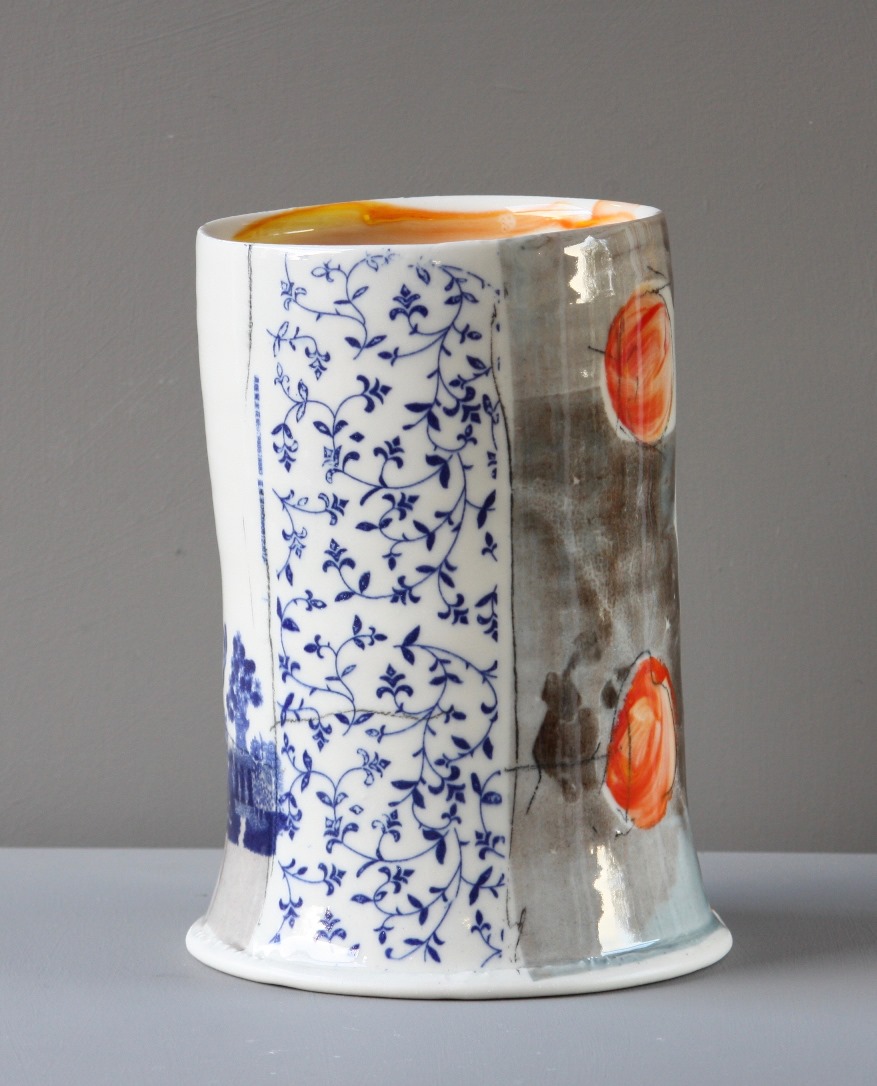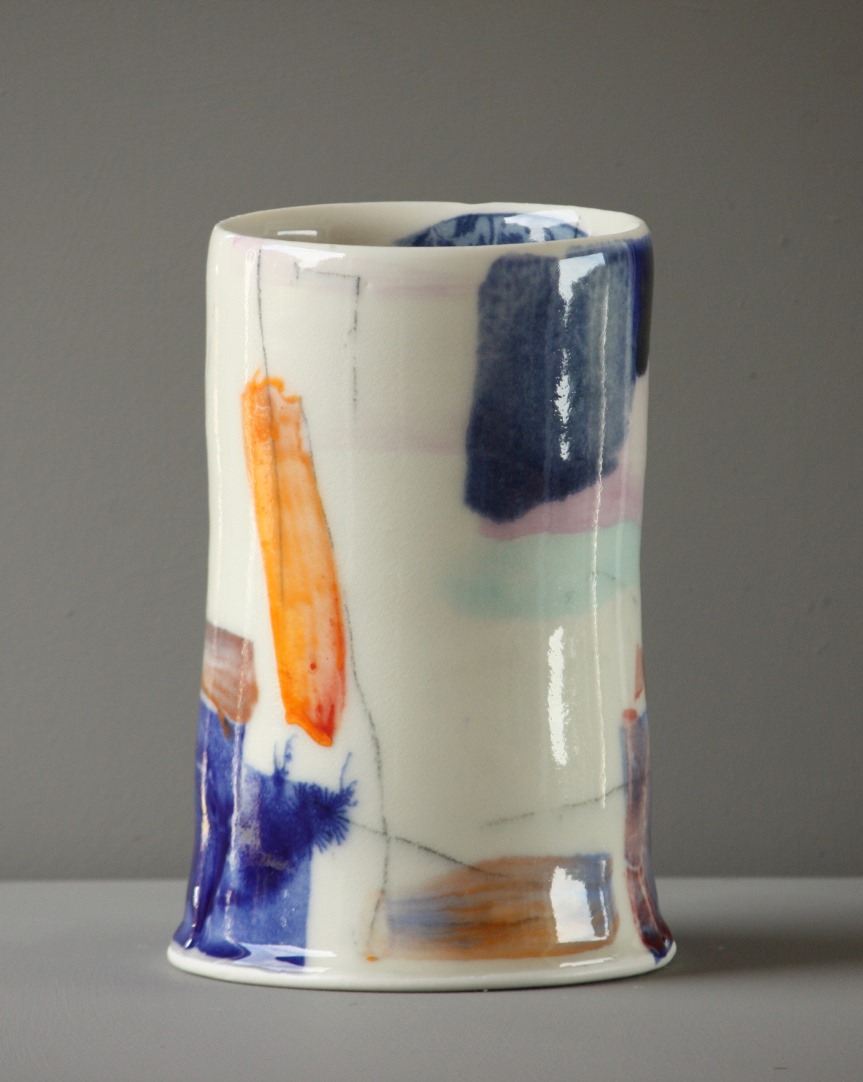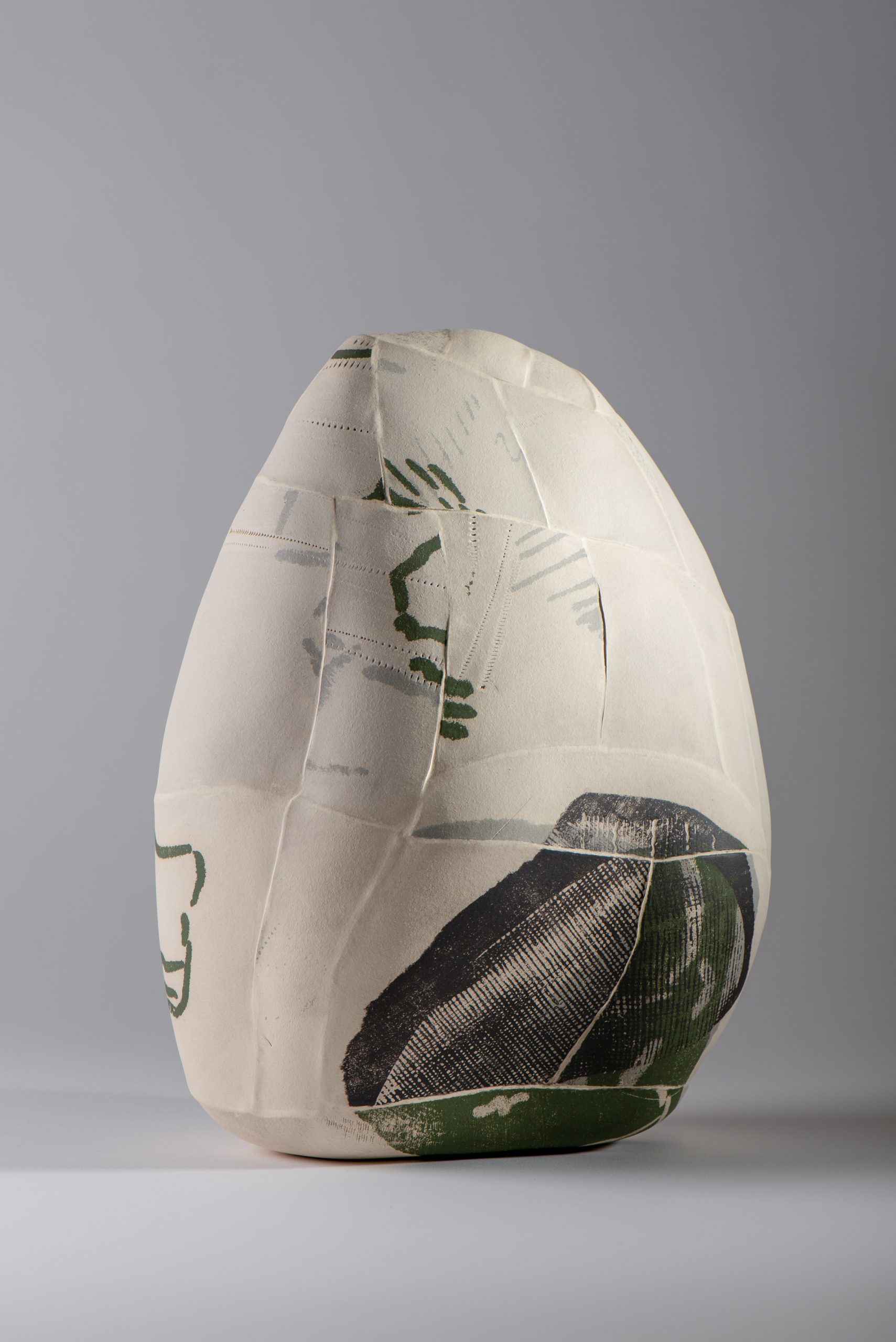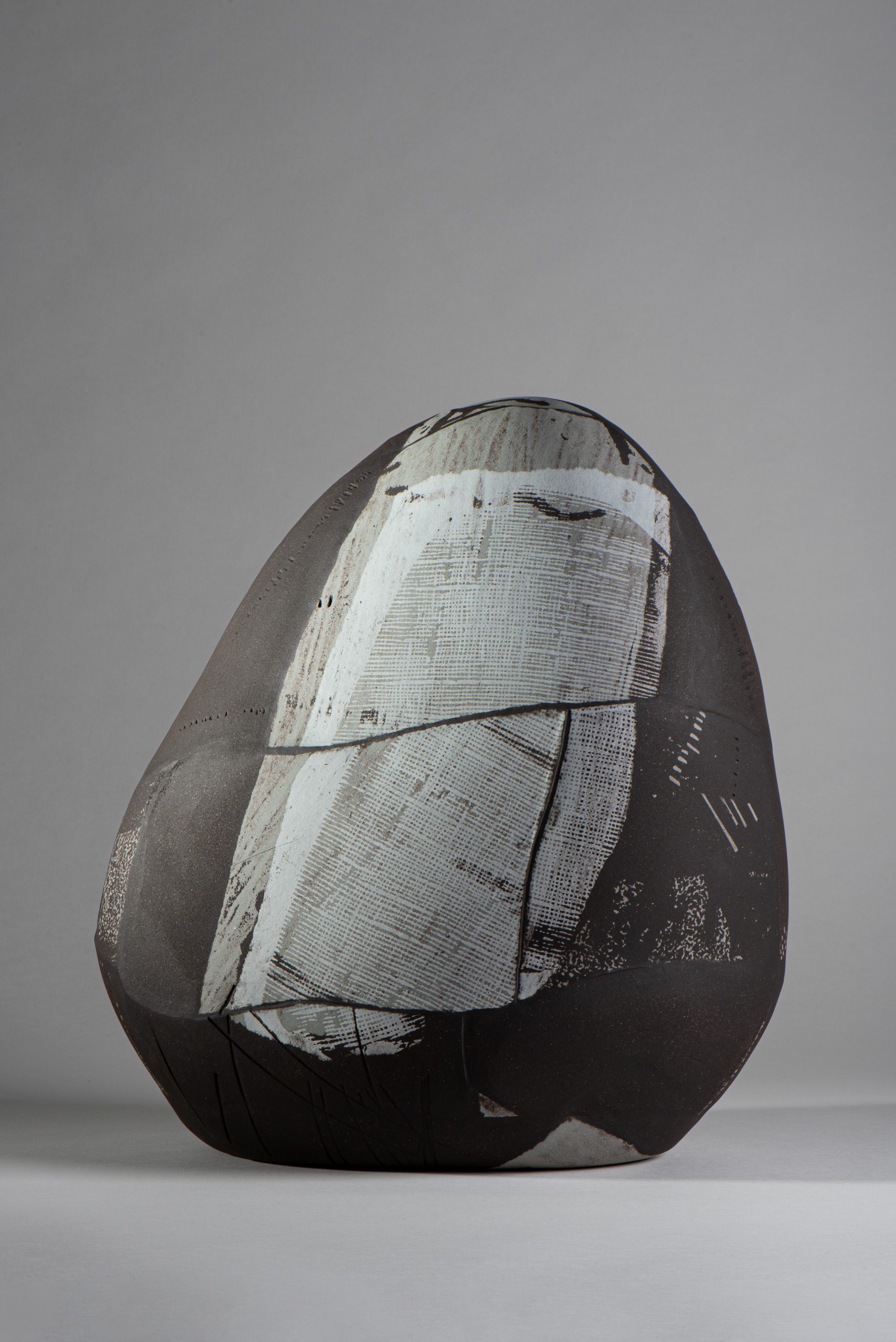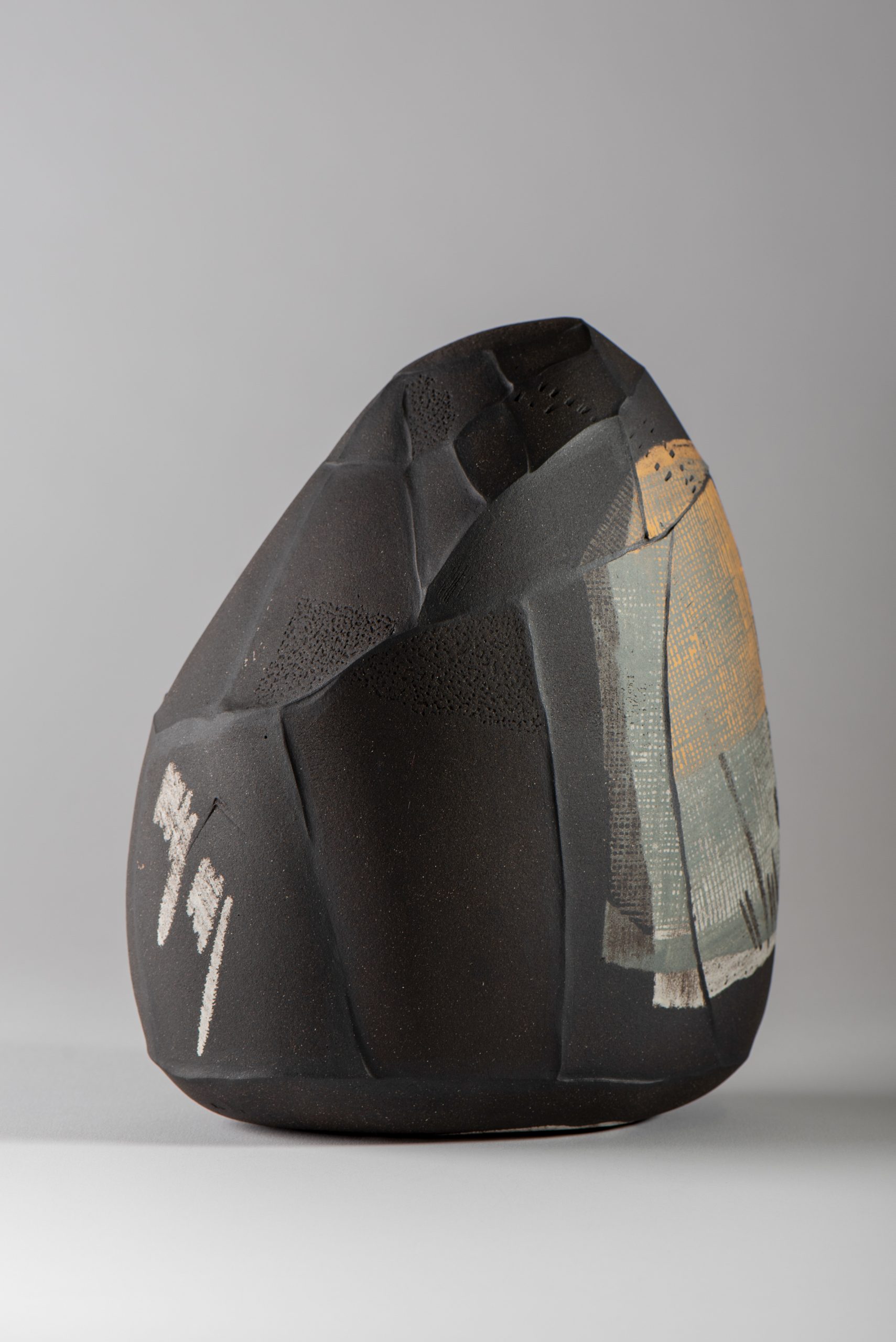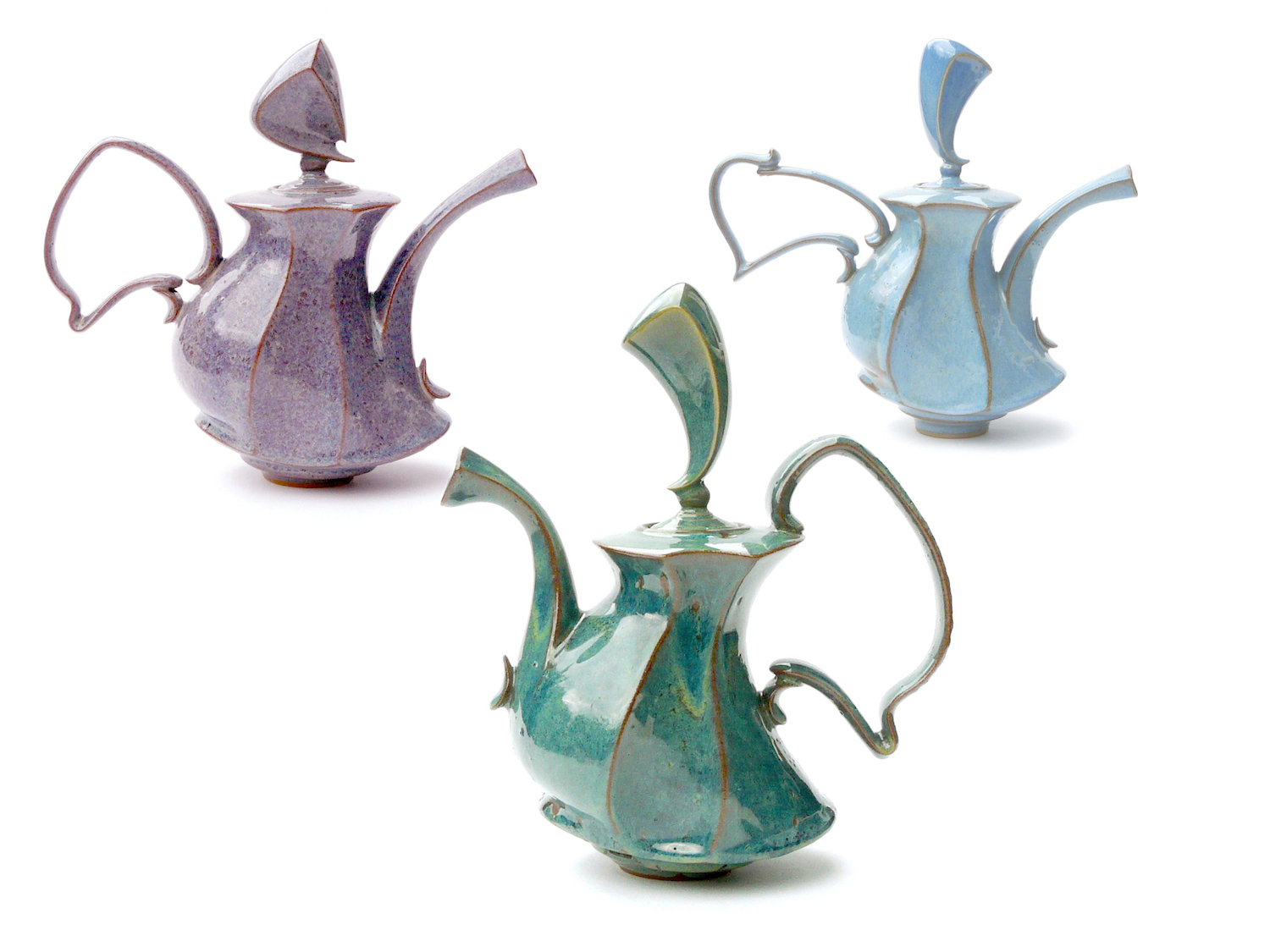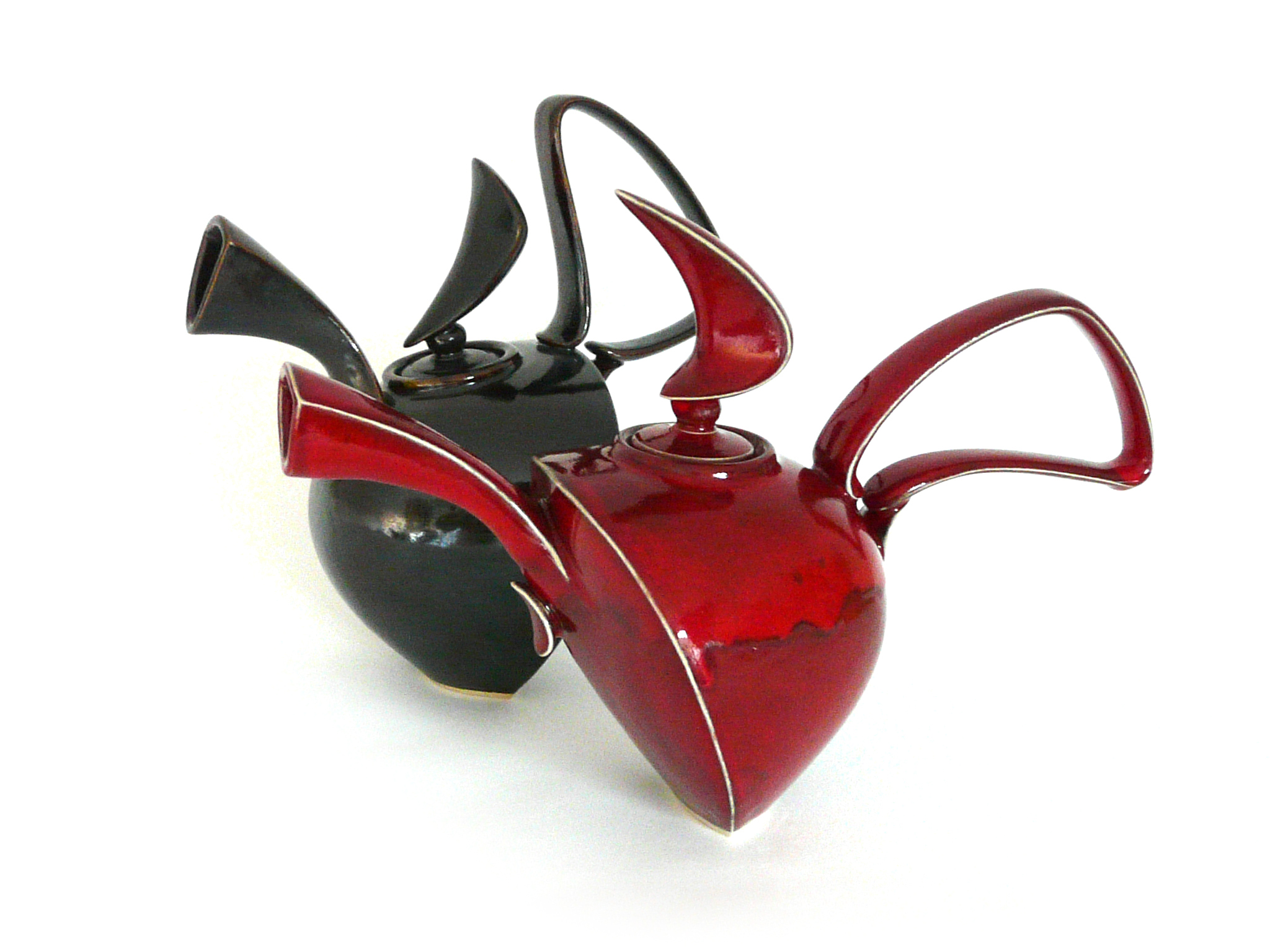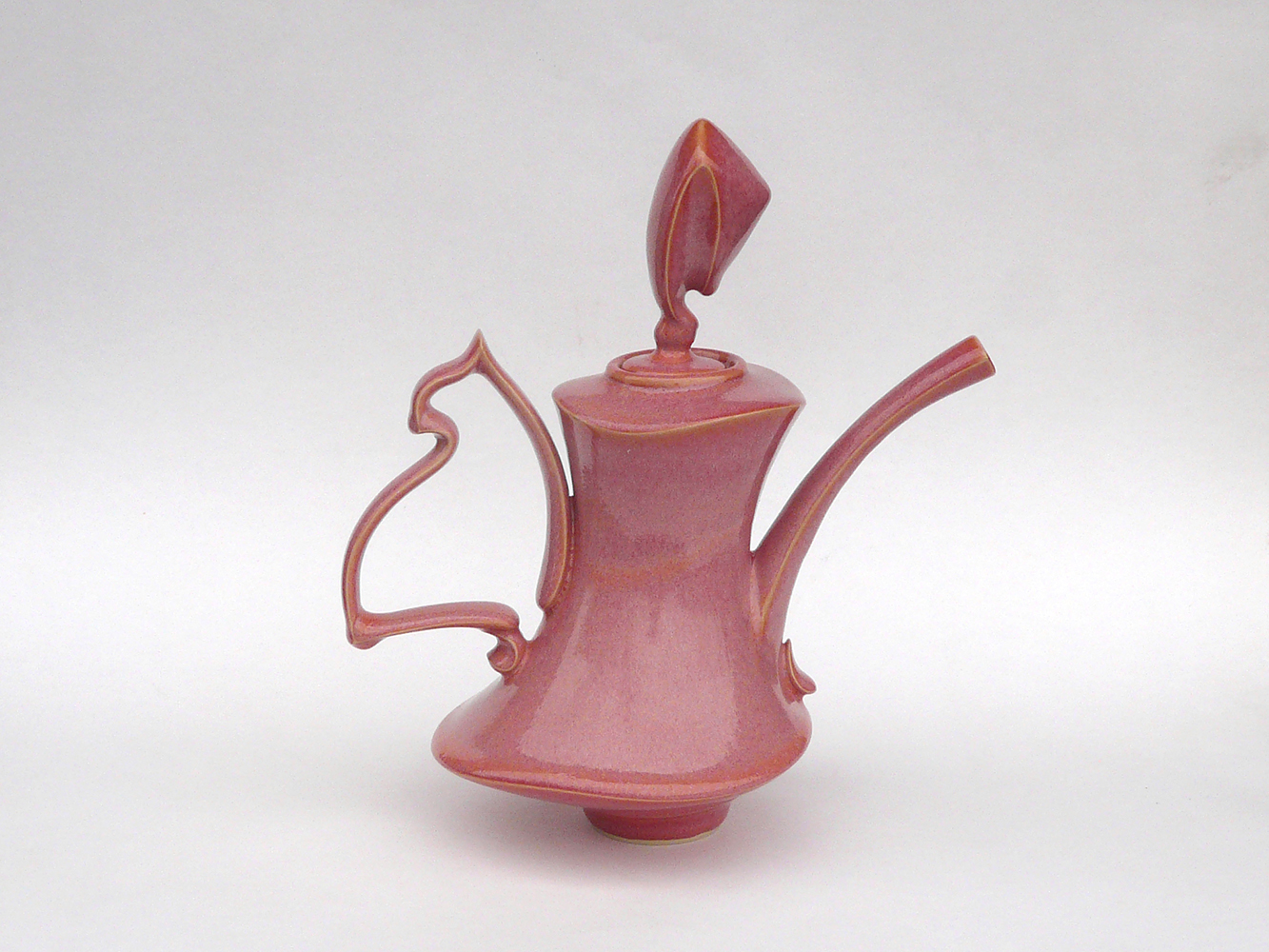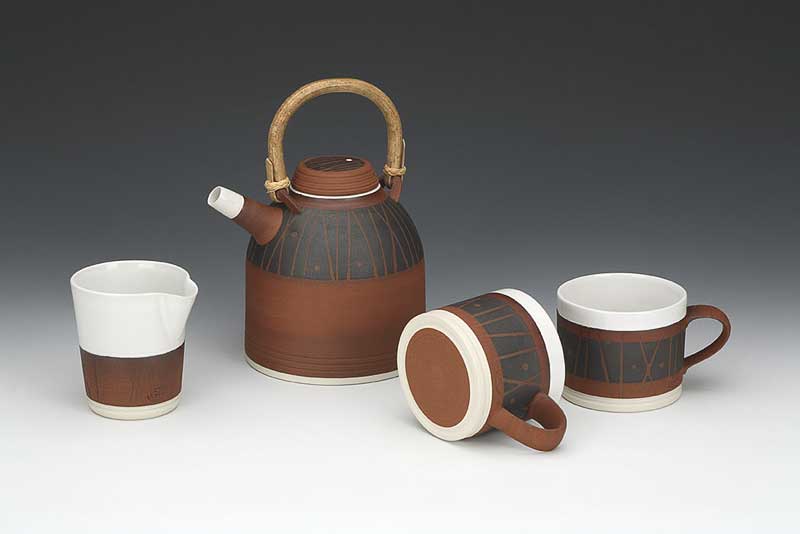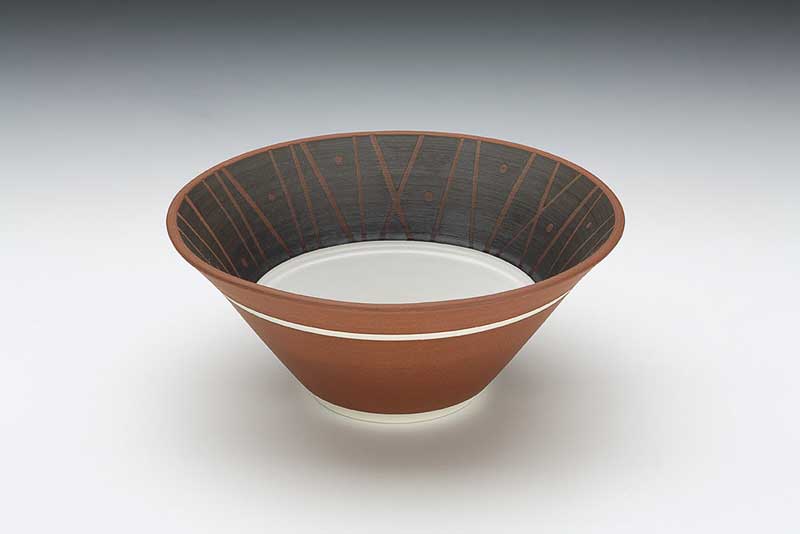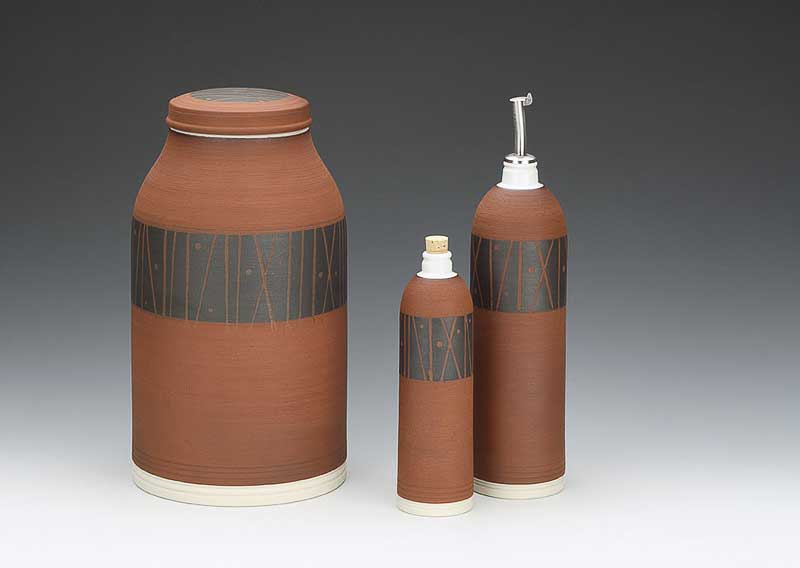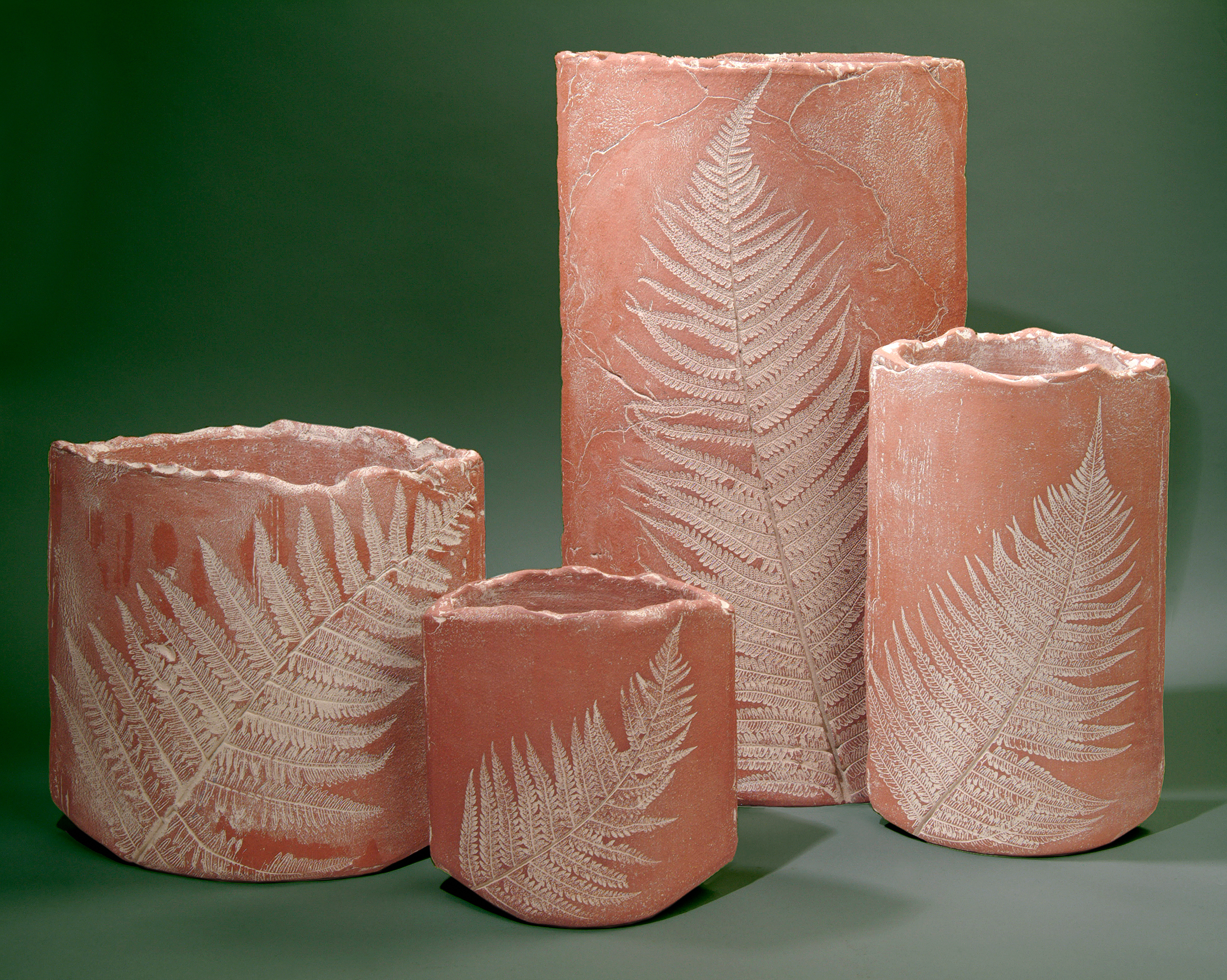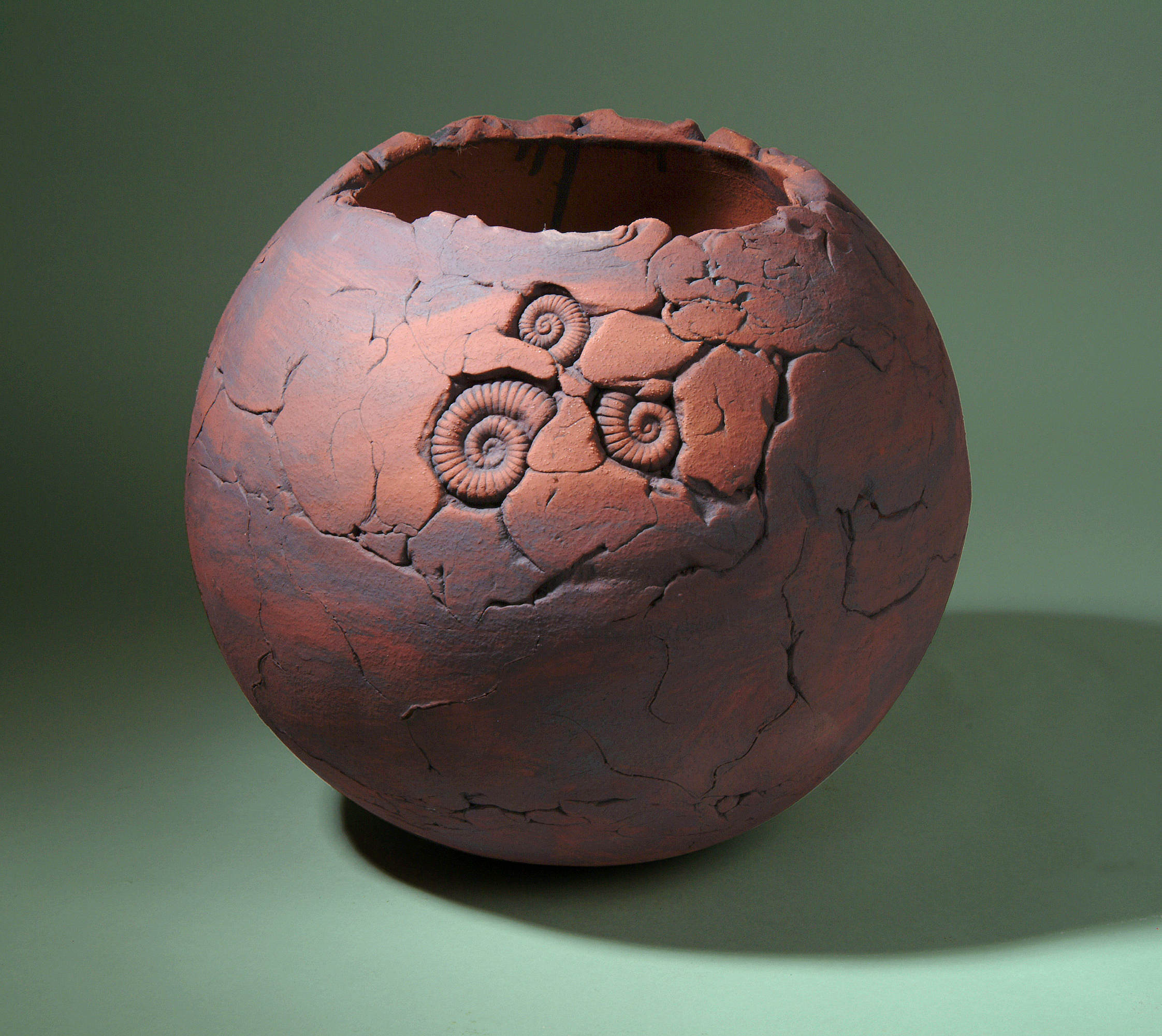CPA Members Profiles – H
For a complete list of Association members, please see our Member Listing web page.
My work is made from white or black stoneware and fired to 1240. It is slab built with coiled or thrown spouts where appropriate.
I make wheel-thrown porcelain vessels for decoration and use. I relish throwing with porcelain for its unique combination of delicacy and strength, and the pure surface it offers for a glaze. Elegance and balance define the pared-back simplicity of my work, where the form is paramount. Vessels are thrown to a fine and delicate finish. Surface decoration is minimal – an incised line to articulate a foot or a rim, or on moon jars a ‘universal writing’ in slip to add a dynamic to this most static and peaceful of forms. I am inspired by the classic forms of oriental ceramics, and a desire to bring them a contemporary quality of my own.
My work is about natural growth and form. In the computer I can draw the shapes of nature freehand in 3D and I can model natural processes with mathematics. I am inspired by the strong, graceful curves of flowers and plants, by the incremental growth of shells and trees and by changing patterns like ripples in a stream. I respect the long history of ceramics and often return to traditional forms such as bowls and vases but with a new twist.
Jennifer’s ongoing aim is to develop a comprehensive range of pots that enliven the daily rituals of taking nourishment. Jennifer is drawn to earthenware for its warmth of colour and softness of edge.
I make trompe –l’oeil sculptural work such as bags, shoes and boxes of bric-a-brac.
Originally from Japan, I obtained the degree of BA, Art and Design at Leeds Metropolitan University in 1999. Oriental influences are strong in my clay work, which springs from my long involvement with Japanese calligraphy and Textiles. I express my feeling for nature and the human spirit in an abstract way, using calligraphy brushes to emphasize the spontaneous movement of line. I am interested in Photography as well. Mainly take landscape and nature.
I build using the pinch and coil technique, stretching and pushing the clay
out and guiding it in again until the forms begin to develop their own
dynamic and a certain trajectory is suggested, until in a sense, myself and
the material are co-creating and I’m making decisions without realising I’m
making decisions. And what starts out as something personal to me
inevitably becomes quite universal, it becomes just something very human.
The bulges and hollows of the forms develop a psychological and emotional
resonance, an organic familiarity and sense of natural balance, that has a
presence that one can relate to.
Life is mysterious in a way so for me making is an investigation into that.
I have been visiting the North Wales coast of the Llyn Peninsula for over 30 years. These regular pilgrimages from my London studio are a ritual that is the foundation of my work. Regina Heinz is known internationally for her tactile ceramic sculptures with highly distinctive abstract designs. Regina studied Fine Art and Ceramics in Vienna, Geneva and London. Regina received funding from the Crafts Council to set up her studio in South-London in 1998. Lise’s primary interests lie in creating highly textured and natural, organic forms, with references to details in nature and the urban environment. Memories of growing up in a rugged landscape in Norway inform both shapes and mark-making, imbuing the pieces with a sense of place.
Combination of hand-builts and thrown ceramic ware (practical and decorative). The pieces are fired at Akiko's studio at the Chocolate Factory N16 in London.
Rachel makes miniature vessels and installations that are hand thrown, turned, stamped and glazed or sometimes left unglazed and simply high fired, which sit on slab rolled porcelain bases. Terri studied ceramics at Cardiff School of Art graduating in 1981. For the past 20 years she has lived on the edge of Dartmoor near Bovey Tracey.
All of my pots are hand thrown in porcelain, or a very fine white stoneware clay. Crystalline glaze is very special in the fact that crystals actually GROW in the glaze during the firing. They grow randomly, making every piece completely unique.
Context and placement steer the thinking behind Ashley Howard’s work. He has always been fascinated by ritual and ritualistic vessels, and has maintained a dialogue between Far-Eastern and homespun ceramic traditions which address his fascination with ceremony. Reflection through making is key to both his research development and teaching. Ashley is primarily a maker, and he is intrigued by the instinctive and intuitive engagement between maker and material. He is interested in exploring the architecture of the vessel, its surface and its relationship with the human and the spatial environment. Ashley is a member of the International Academy of Ceramics. I am a ceramic artist creating works that explore mystery, trigger memories, generate atmosphere and evoke a sense of place. I use clay as a medium for drawing and monoprinting to create sculptural, slab built, ceramic forms. My inspiration is drawn from the landscape, history and culture surrounding me in rural Herefordshire. It is important to me that the form and surface of my work create a harmonious composition and are integral to my subject matter. My creativity is driven by the passion for colour, shape, impression of momentum and composition variability.
I appreciate pure aesthetics of form, expressed in clean but complex geometric lines and proportions of golden ratio. Equally I’m interested in distinct shapes that reflect the
impact of natural forces in life, which ultimately urged me to seek ways of escaping the constraints of the traditional symmetric wheel-thrown form.
I pursue well defined vessel shapes with tense potent curves that draw principally different silhouettes on the opposite sides of the piece, emphasised by strong diagonals and distinct colour solutions. Presented collection of artworks renders well recognisable vessels with an intension to convey the sheer impression of energetic and graceful moves performed by dancers, live chess figures, swans, cockerels or peacocks. The pieces can be viewed separately as well as in a number of combinations, showing respectively different visual interaction
and degree of tension.
Deliberate juxtaposition of the geometrically stylised gendered vessels, conceptualised in pairs, is used to explore the phenomenon of complimentary counterparts’ unity and
contradictions, as one of the key expressive means. My current work consists of small batch production and individual functional tableware pieces informed by a strong interest in both ancient and contemporary ceramics and manmade patterns, textures and colours in local landscapes and architecture. I have a strong interest in materials and process, and continually trial new ideas, keeping my work moving and developing. I try to keep pieces simple, unfussy and contemporary, my intention is for them to be both visually appealing and a pleasure to handle and use.
John Huggins studied Studio Ceramics at Harrow School of Art in the late 70's, and subsequently went on to open Courtyard Pottery in Swindon. For over 25 years, he specialised in making a range of traditional hand thrown terracotta garden plant pots from his workshop. Mixing locally sourced clay with brickyard clays, he created robust and hardy pots. Long lasting, and weathered by the elements, their vitality and colour only seem to improve with age.
He since moved on to making more limited editions of press moulded plant pots and ceramics, both in terracotta and stoneware. His Fern Pots, Sphere Planters, and Landscape Pots combine elements of nature and geology in distinctive, yet functional forms. The use of oxides and coloured slips highlight texture and surface features in the clay.
For many years John exhibited his work at RHS Chelsea Flower Show. In 1995 the workshop moved to the Forest of Dean, Gloucestershire and became Ruardean Garden Pottery. Now, he concentrates on teaching throwing on the potters wheel, holding a variety of classes every month, for all levels, from complete beginners to experienced throwers. Björk Haraldsdottir - CPA Selected Member
My decorating process is done with scraffito technique. I paint the whole piece with either black or white slip, score the pattern using a pencil and paper strips and then I scrape the slip off back to the clay revealing the pattern. The scrape marks are visible and add a tactility I feel is important. I do not often glaze my work except in a few pieces where red glaze dots are used as highlights.
Robyn Hardyman - CPA Selected Member
I am engaged in the active development of a harmonious glaze colour palette to complement the restrained forms – my glazes are cool blues, greys, greens – and am also fascinated by the relationship between pieces when grouped together, the shapes and shadows between the forms, and the relationship between their colours and textures.
These are vessels to contain, and to hold in your hand. Objects to bring pleasure in daily use or in contemplation. Jack Hardie - CPA Selected Member
My designs solidify in my home-built 3D printers, growing slowly from a thread of soft porcelain just a millimetre or two thick. The porcelain mix must be just right so I prepare it by hand.
The design needs inherent strength for the work to support itself as it grows. Just like a growing plant or animal, it must be able to stand up before the building material has fully hardened. The kiln transforms this fragile structure into something to be viewed and handled over many years. The colours come from body stains hand-mixed into the raw clay and the work is unglazed so that the tactile impression of the making process is baked into the finished ceramic.
Jennifer Hall - Selected member
Thrown on a kick wheel, slip is then brushed, poured, dipped, trailed and sgraffitoed on the pots. They are bisque fired then gazed with a non-toxic lead glaze and fired to 1060 degrees.
Her pots do not challenge but give comfort, they appeal to the eye, sit comfortably in the hand and are gentle on the lips, enriching meal times.Janet Halligan - Selected member
The work is hand built from slabs with modeled details in stoneware. The pieces are glazed using a range of stoneware glazes and finished with platinum and copper lustres.
There is also a range of related vessels –primarily jugs and mugs featuring different fastenings. I am also developing a range of vessels and sculptural pieces inspired by landscape.Keiko Harada
My pieces are selected from International Ceramics Competitions; the Fletcher Challenge in New Zealand; Mashiko and Mino in Japan.
Invited to Summer- Workshops/ Symposiums held in Serbia, Japan, Slovenia, Turkey and Latvia since 2004 -2010.Kerry Hastings - Selected member
An investigation into being part of a bigger rhythm.Richard St. John Heeley - Selected member
I spend these visits walking the coastal path and recording its textures, shapes, and structures. I try to capture the contrasting movements between the edges of the land and sea by using lines and brushstrokes that have a visceral quality.
Painting on location in all weathers is incredibly important to capture designs that match the fluid quality of throwing and the fast slipped brushstrokes that I use. I believe the subject of landscape has a simple quiet affinity with the clay. I bring my sketchbooks back to the studio for development. My aim is to refine and simplify the designs and to ensure that they work in harmony with the form.
I high fire using oxidation and reduction atmospheres, which gives me a palette that ranges from natural stoneware tones to contrasting slips on the canvas of porcelain. I enjoy a deep appreciation of Eastern ceramic traditions and let them influence my designs and techniques: stoneware glazes and forms from China, construction and firing techniques from Japan, and Korean brush decoration.
I mix a range of cobalt and manganese pigments or ‘Gosu’, to use the Japanese name. I compose the recipes to produce a strong variation in tone and brush stroke quality. These slips are made from local clay dug from the sea cliffs, and occasionally with flake iron found on the beaches. I like to use these materials and other elements from the area to reinforce this narrative in the finished work. Regina Heinz - CPA Fellow
She is a Crafts Council Selected Member, a Fellow of the Craft Potters Association of Great Britain, and a member of the International Academy of Ceramics. Regina Heinz has lectured worldwide, including the International Ceramics Festival in Aberystwyth, Wales.
Water is a recurrent motif in Regina’s ceramic work, translated into fluid undulating forms and abstract flowing designs. Her work is hand-built from soft slabs and decorated either with a low firing Lithium glaze (1030° C) or a high firing matte stoneware glaze (1245° C) that produces a beautiful fresco-like surface.
Emmanuel Cooper, editor, curator and art critic, wrote of her work: “Regina’s pieces have a powerful sculptural quality and appear tactile and organic. The sensual curves of the forms suggest both the intimacy of the body and the flowing lines of landscape, though equally, they can be seen as purely abstract in dealing with line, volume, mass and colour”.
Her award-winning work is widely published and held in public and private collections around the world, such as the Fitzwilliam Museum in Cambridge and the Museum of Contemporary Ceramics in
Gifu, Japan.
Regina has been specialising in architectural ceramics since 2011. Portfolio includes a bespoke art-work design for 2000 cabins for P&O’s luxury cruise-ship Britannia, launched in 2015.Lise Herud Braten - Selected Member
Lise works with many different techniques, from delicately thin thrown vessels to roughly textured slabs of coarse clay. Many of the pieces start off on the potters wheel, before being manipulated, altered and carved to soften their shape and appearance away from the perfect circular form. Combining different making techniques within each piece often results in spontaneous and unplanned shapes and structures.
The instinctive nature of making in this way instills a natural and uncontrived expression of a moment in time captured in the shape of the piece.
Using a variety of stoneware and porcelain clays, each piece is layered with slips, engobes, oxides, glazes and natural ash, applied in a painterly and abstract way. Often the pieces are fired several times, with new layers added between each firing. The resultant effect of this treatment suffuses the pieces with a sense of history, of time spent exposed and weathered by the natural elements. There is a sense of timelessness and quiet beauty deep within each piece. Akiko Hirai - CPA Fellow
The studio opens to public twice a year. Accept visits only by appointment.Rachel Holian - Selected member
These collections of porcelain vessels are grouped in a specific way to give meaning to a particular collection. This grouping is personal to Rachel but should have a resonance with the audience that will grow and develop meaning over time. The installations are treasured items intended to bring joy and
invoke memories. The forms are simple, unadorned apart from their stamp. The stamp is a unique impressed gestural mark used to give a feeling of life, a fingerprint, an individual identity. Even though we may be part of a group, it is important to retain our sense of self.
The making process is kept simple; Throwing, stamping and turning porcelain feeling at one with the clay. The porcelain is left alone, or stained grey or black. Work is sometimes glazed with a simple matt or shiny glaze, or sometimes left unglazed and highly fired to become vitrified. All processes are kept to a
minimum, as the spirit and feeling of the work is captured whilst the vessel is in motion on the wheel.
Rachel has worked with porcelain since graduating from Manchester Metropolitan University in 2005. She produced functional yet decorative tea utensils, selling throughout galleries and craft fairs such as Origin and Contemporary Ceramics. She exhibited in New York in 2010 showcasing the best of Contemporary British craft in the NYIGF.Terri Holman - Selected member
Terri uses rolled slabs of clay to make vessels that occupy a shallow space. When the clay is rolled, it is often impressed with found objects, giving patterns, grids or more random marks. The colour and surface quality is suggestive of the landscape that she is surrounded by. The drawn line is also important as is the delicate shading of colour to emphasize the illusion of a greater depth.
The vessels are bisque fired then taken to 1260 degrees centigrade in a gas reduction kiln Some pots are then highlighted with enamels.Matt Horne - Selected member
Crystalline glaze is very fluid at high temperatures, so the pot has to be placed on a pedestal and placed in a dish, to catch the runoff during the firing. When the kiln reaches the maximum temperature (up to 1280c) it is then cooled to a specific holding temperature - this is the time when the crystals form in the glaze. The amount of time held at this temperature determines the size and shape of the crystals.
When all has cooled down, there is the delicate operation of removing the pot from the pedestal and grinding the base smooth.
Crystalline glazing is time consuming & expensive to produce. There can be many failures, but when all goes well the effects are stunning!Ashley Howard - CPA Fellow
Verity Howard - Selected Member
Jaroslav Hrustalenko - Selected member
Graham Hudson - Selected member
Current pieces are either Slip-Cast and altered, thrown or press moulded, in semi-porcelain and terracotta bodies. Coloured slips and decorative surfaces are added to greenware and a white tin glaze is applied after bisque.John Huggins - CPA Fellow

